Piñatas: The High Art of Celebration
The Craft in America Center is pleased to present a dynamic in-person and virtual exhibition of about fifty works made by fifteen artists and artist collectives from across the U.S. and Mexico, which focuses on the overlooked craft of handmade piñatas and piñata-based art objects.
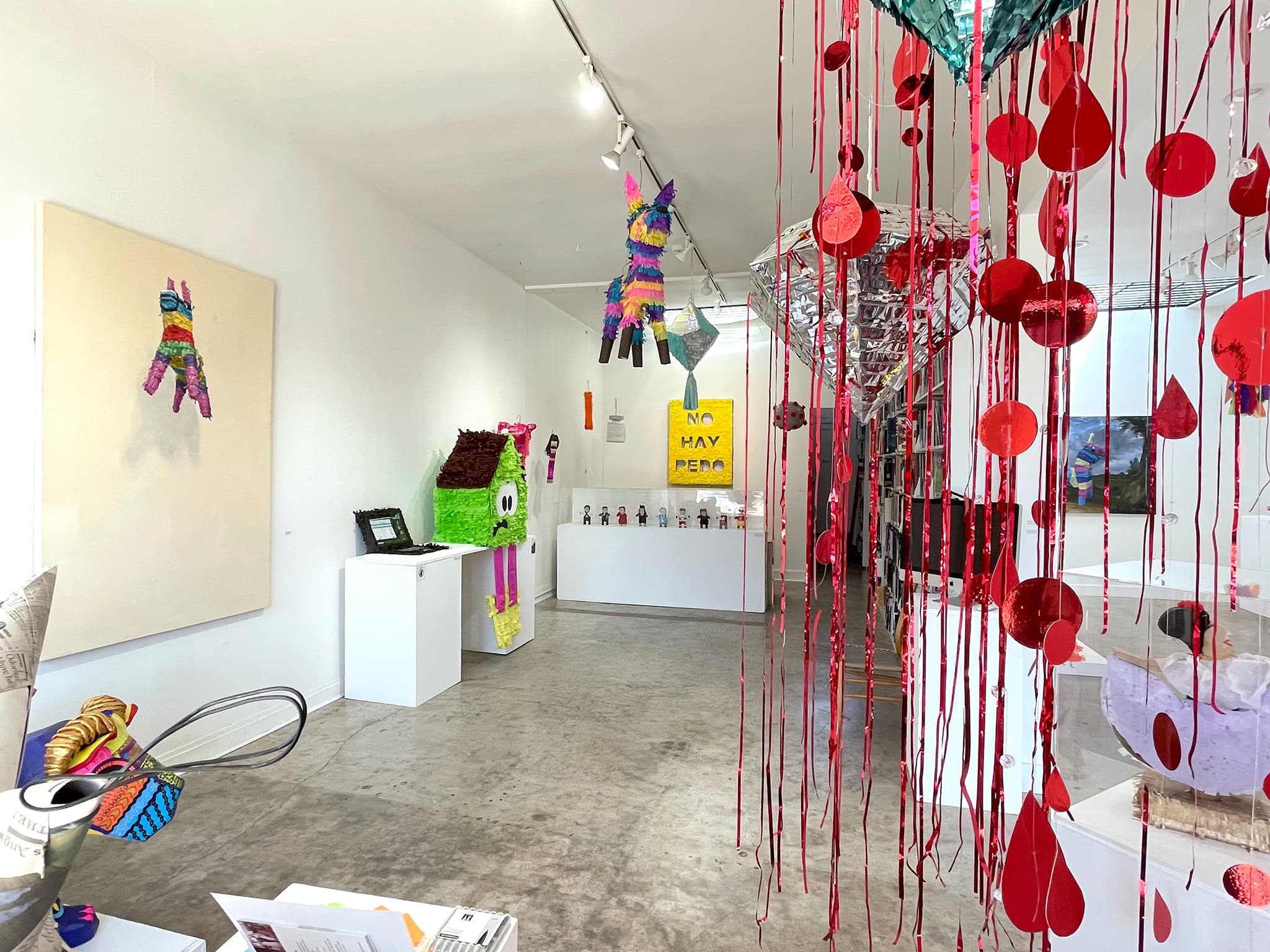
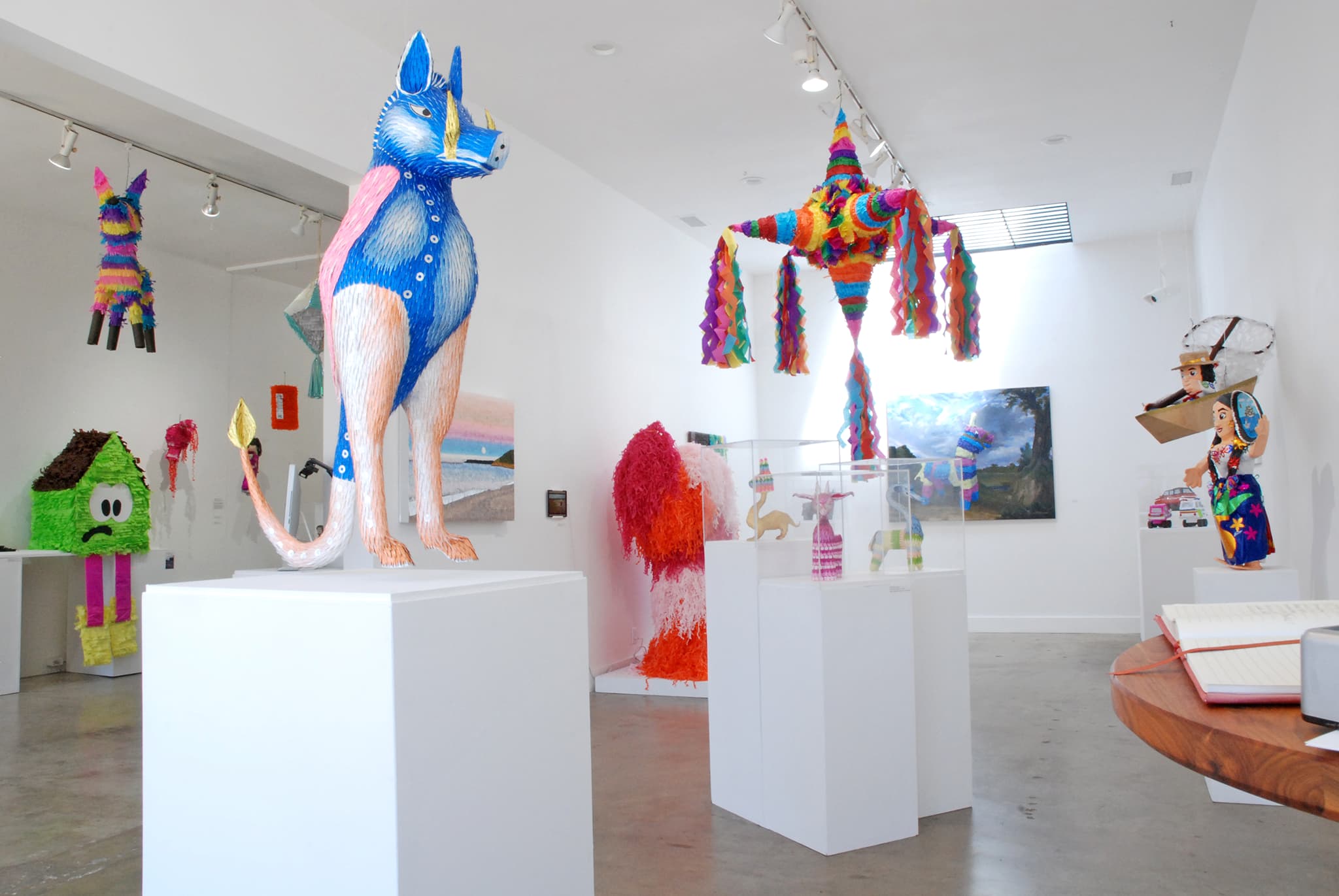
Piñatas, ubiquitous and often the focal point of parties and festive occasions across the U.S., are handcrafted and ephemeral objects that signify happiness, joy, release, and celebration. This exhibition touches on the role that they play in modern material culture and how they are made to embody social commentary, along with the ways that artists address piñatas as conceptual and technical launching points for their vision.
The work of traditional piñata artisans is presented alongside the creations of artists who reinvent and reinterpret the piñata through engaging sculptural practices. The contemporary artists featured in this exhibition reconsider the techniques, materials, form, function, and notion of the piñata, forming a new language for expression.
Piñatas are a deeply rooted Mexican tradition that has become widespread and beloved across cultures. Piñatas are accessible by nature and made from relatively humble materials. They are shapeshifters that can be created to take any form, be that of a creature, shape, figure, or idea. Considering their popularity in our lives and how many memories are made around piñata play, this contemporary form of cultural craft has been relatively unexamined.
As creators of material culture, craft makers design and build the relics of our everyday, modern world. This exhibition touches on the ephemeral and performative nature of certain forms of craft. Craft today plays a part in our traditions, our celebrations, our relationships, and it deepens how we experience life, even when it is destroyed or discarded after use.
Piñatas are intertwined with childhood experiences, gatherings of family and friends, and celebratory turning points in life– all of which have become much more precious to us in this era of COVID. As markers of these events, piñatas have new resonance and meaning today. They continue to be shaped to reflect changing times. This exhibition spotlights makers who creatively generate these objects in response to our shifting world.
For programming related to this exhibition see the links to the right (desktop), bottom (mobile), or click here for all upcoming events.
For inquiries or more information, contact center@craftinamerica.org
Virtual Gallery
Click and drag, or use your arrow keys, to see a 360º view of the virtual space, including tags with object information and images.
Exhibition Catalog:
Printed copies of this catalog are available on Blurb for $15.
Click on the catalog to view full screen and zoom options 
Videos
View the objects in the exhibition below and click on each image for additional information.
Image Gallery:
Piñatas as Fantasy
Roberto Benavidez
Benavidez is a figurative sculptor originally from South Texas, now based in Los Angeles. After studying bronze casting at Pasadena City College, Benavidez later switched to paper because it was a more accessible medium. This material shift led him to focus on the piñata technique, a familiar form from childhood.
For his landscape piñatas, in this case one of the pristine beaches on Santa Rosa in the Channel Islands, Benavidez uses the feathery qualities of his paper medium and crisp cuts to create reflectivity, depth, perspective, and variations of color and light.
Benavidez plays with underlying themes of ephemerality, race, and sin in his impeccably crafted works.
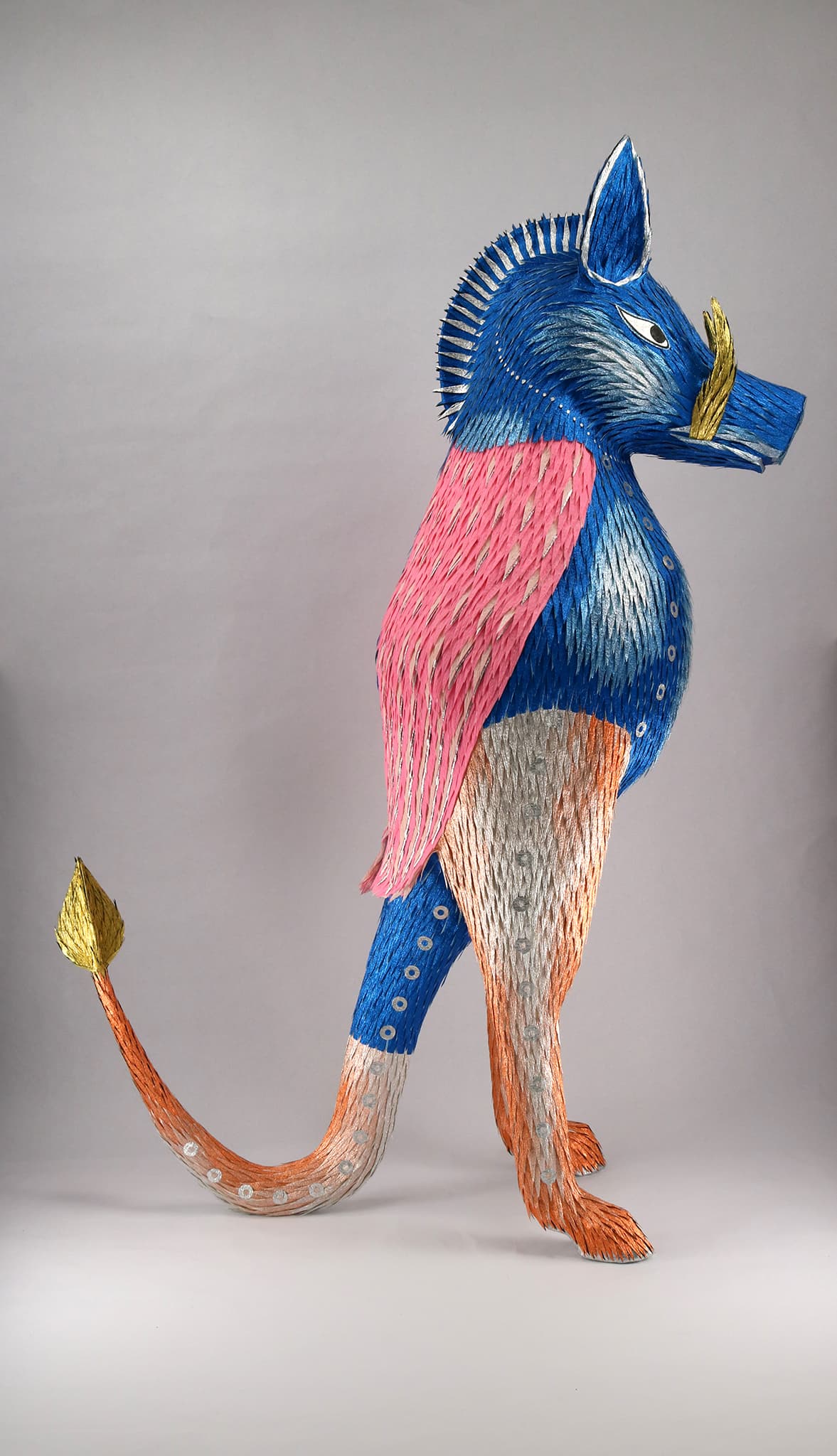
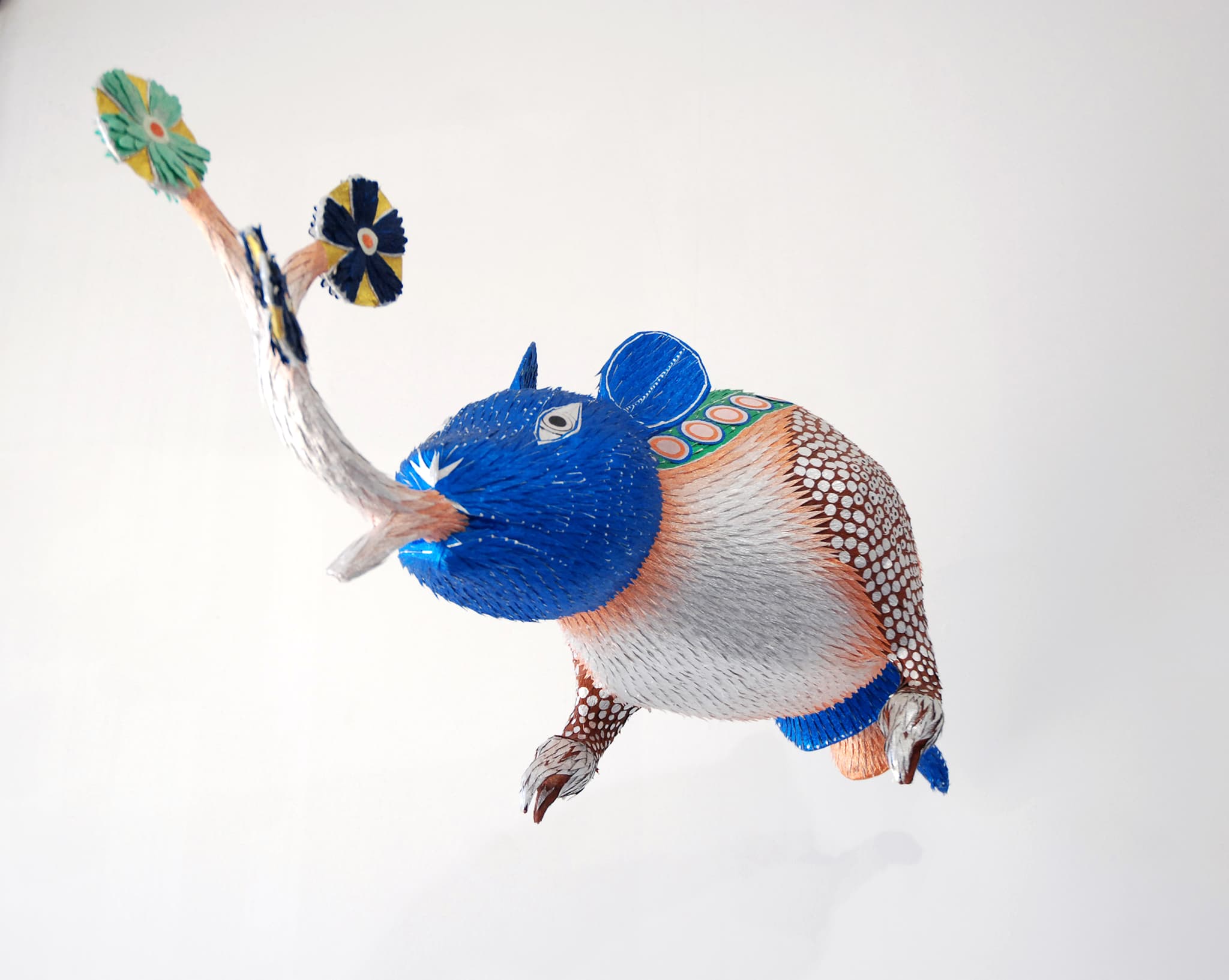
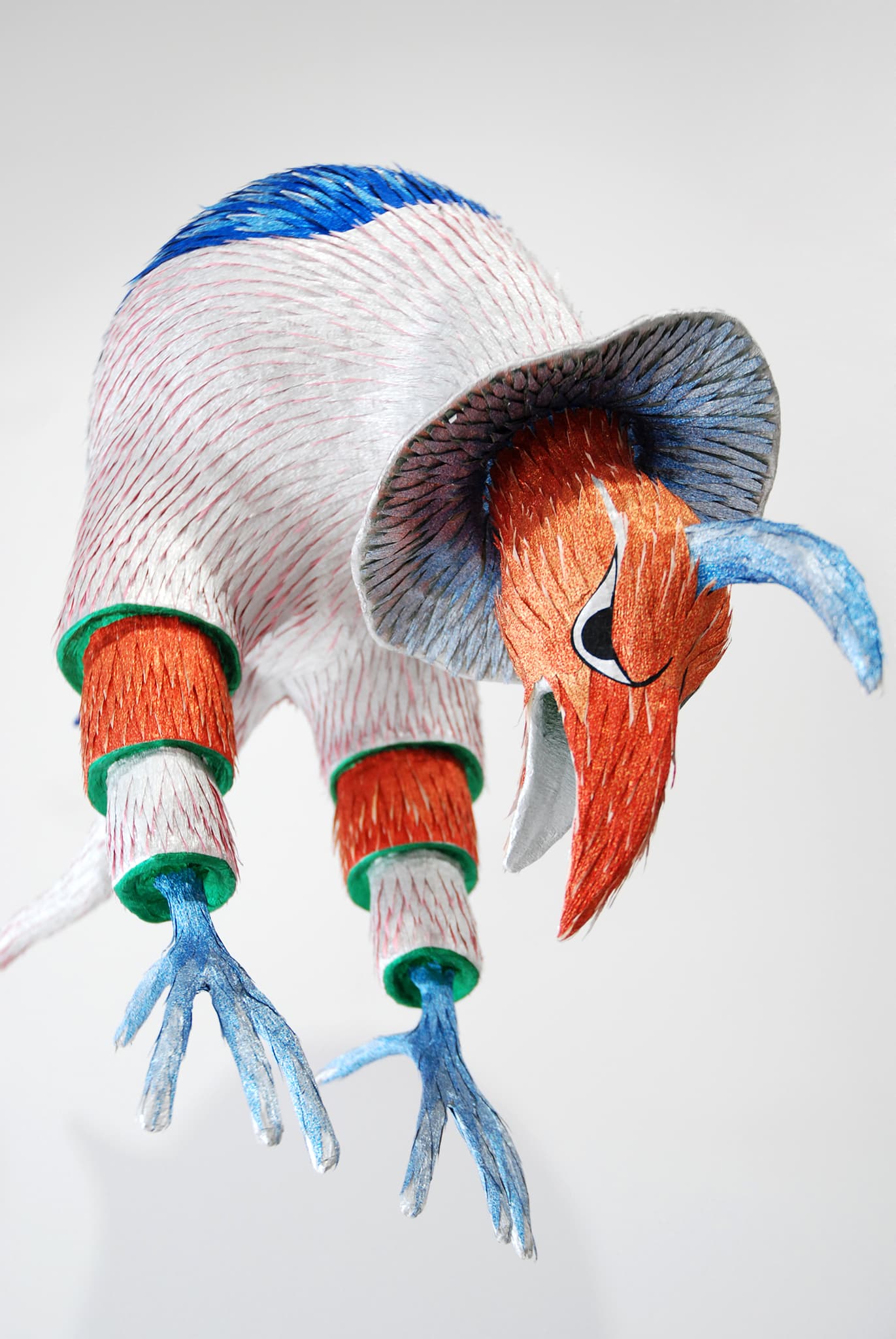

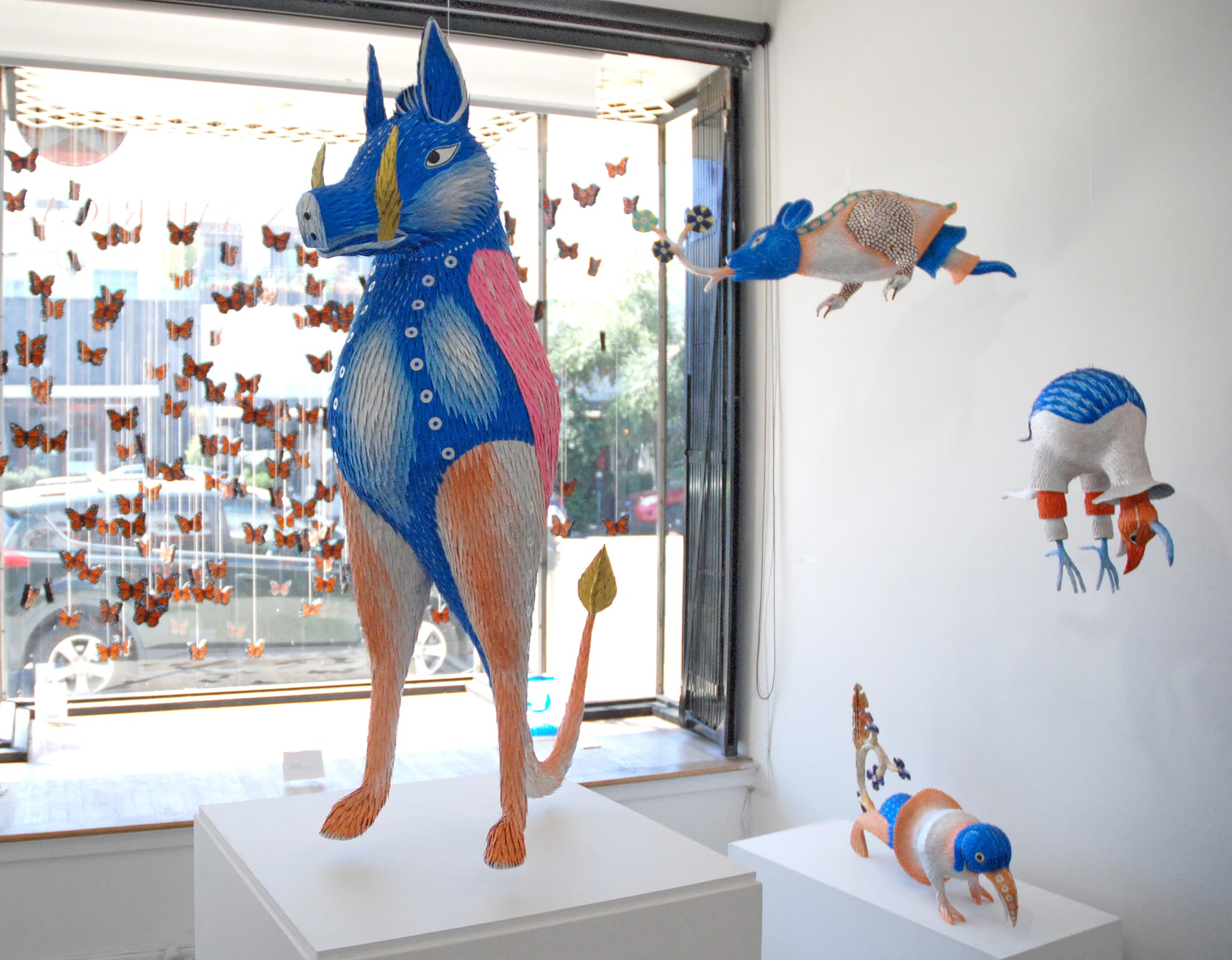
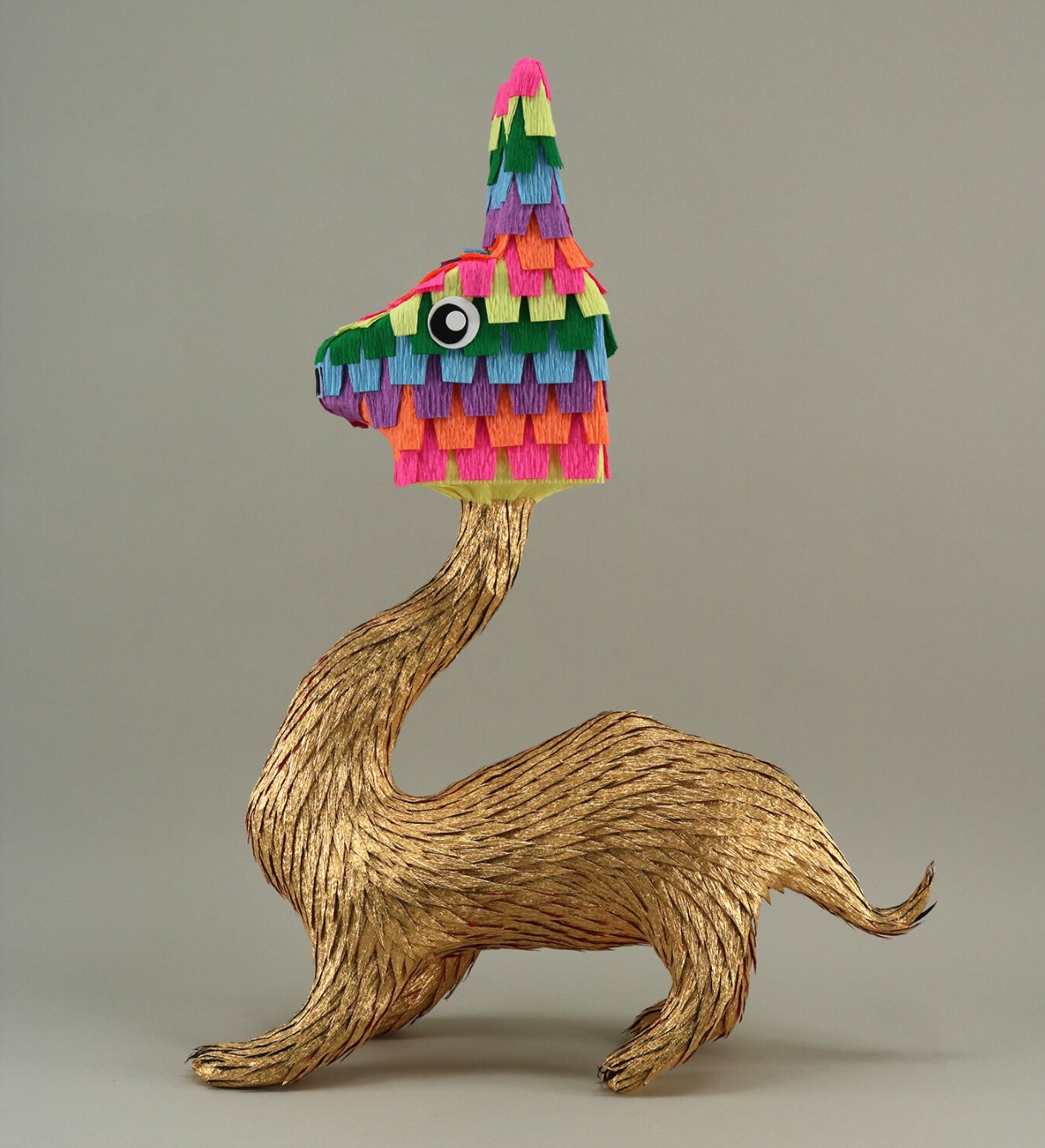
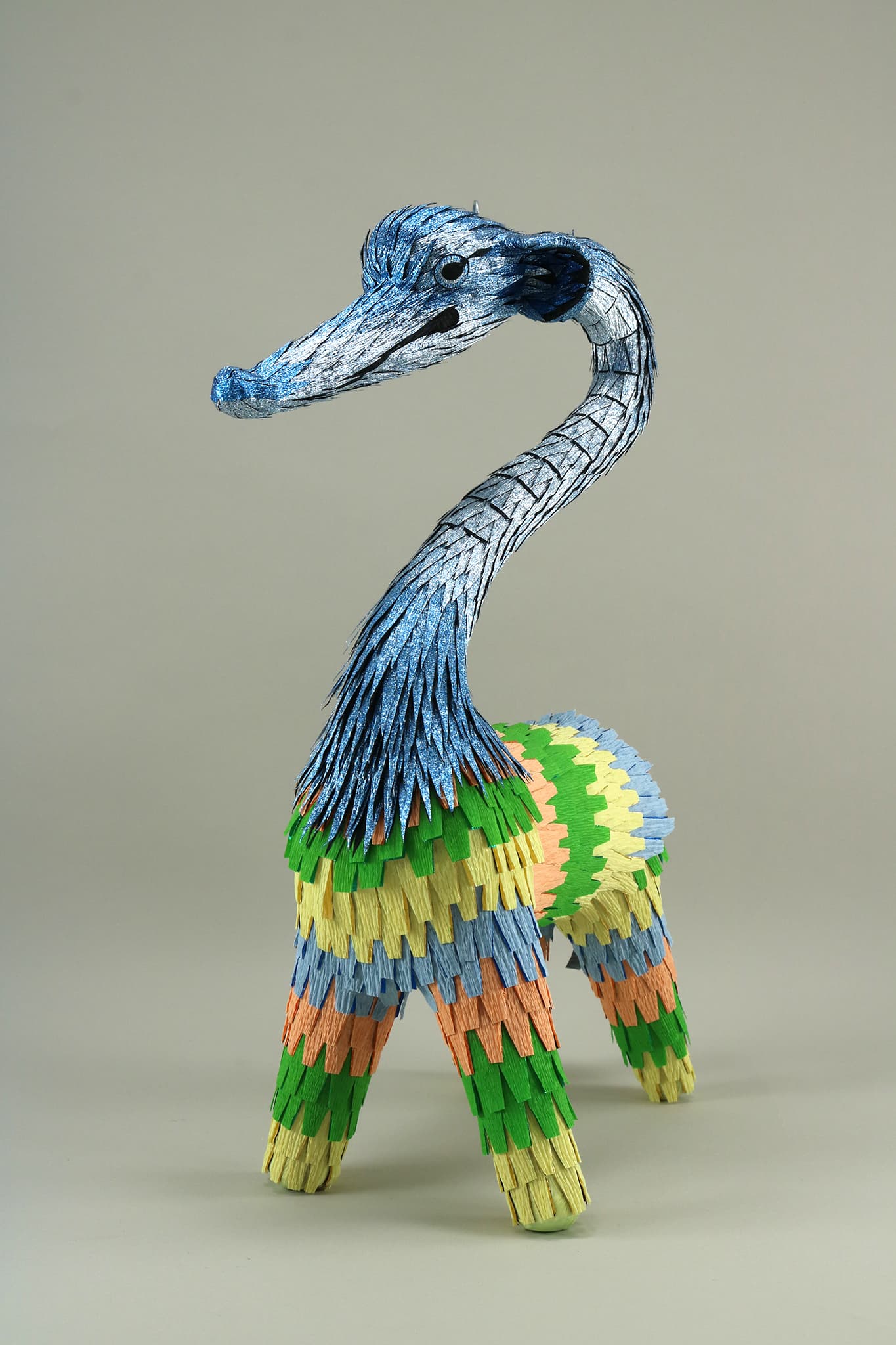
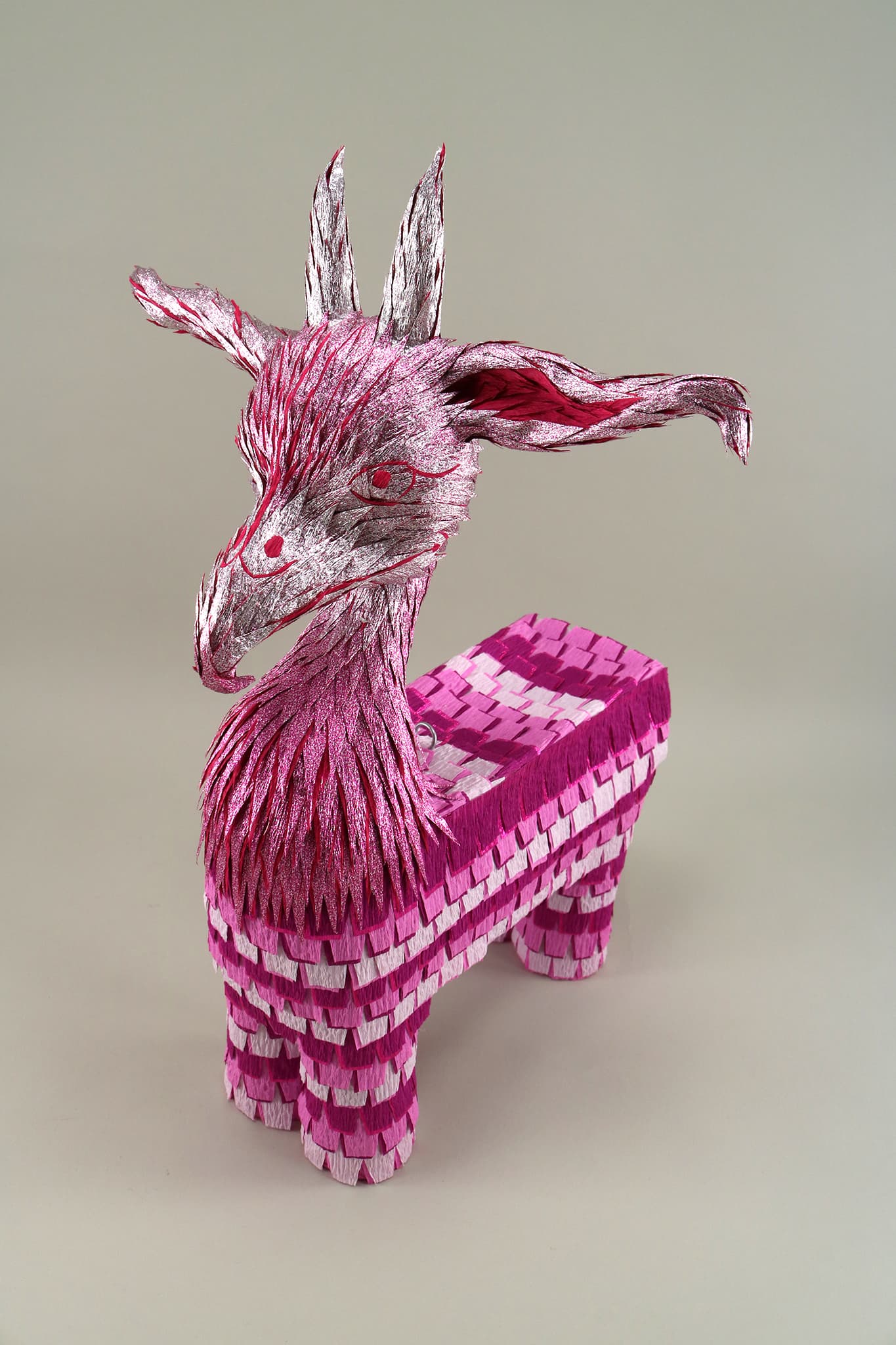
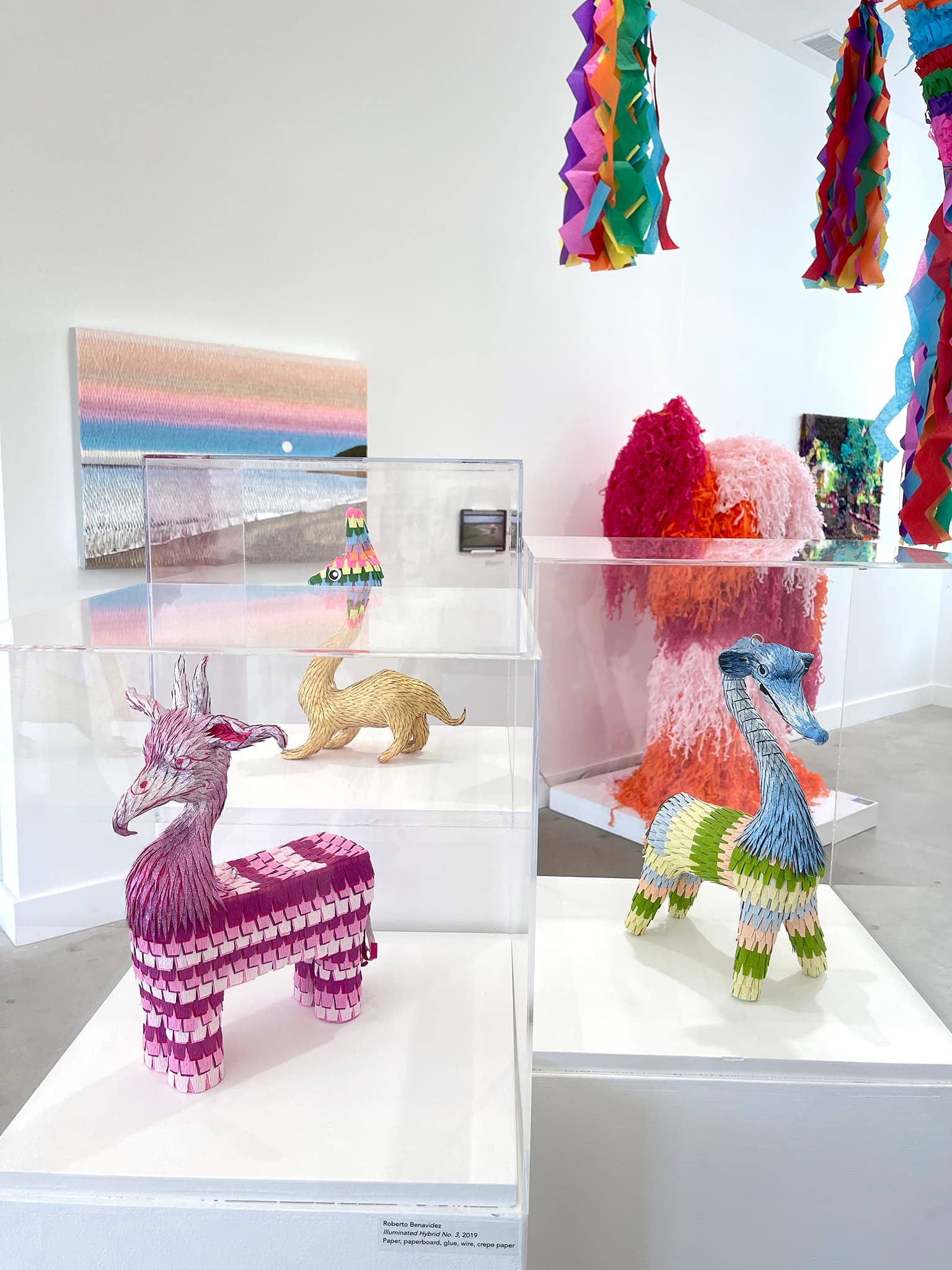
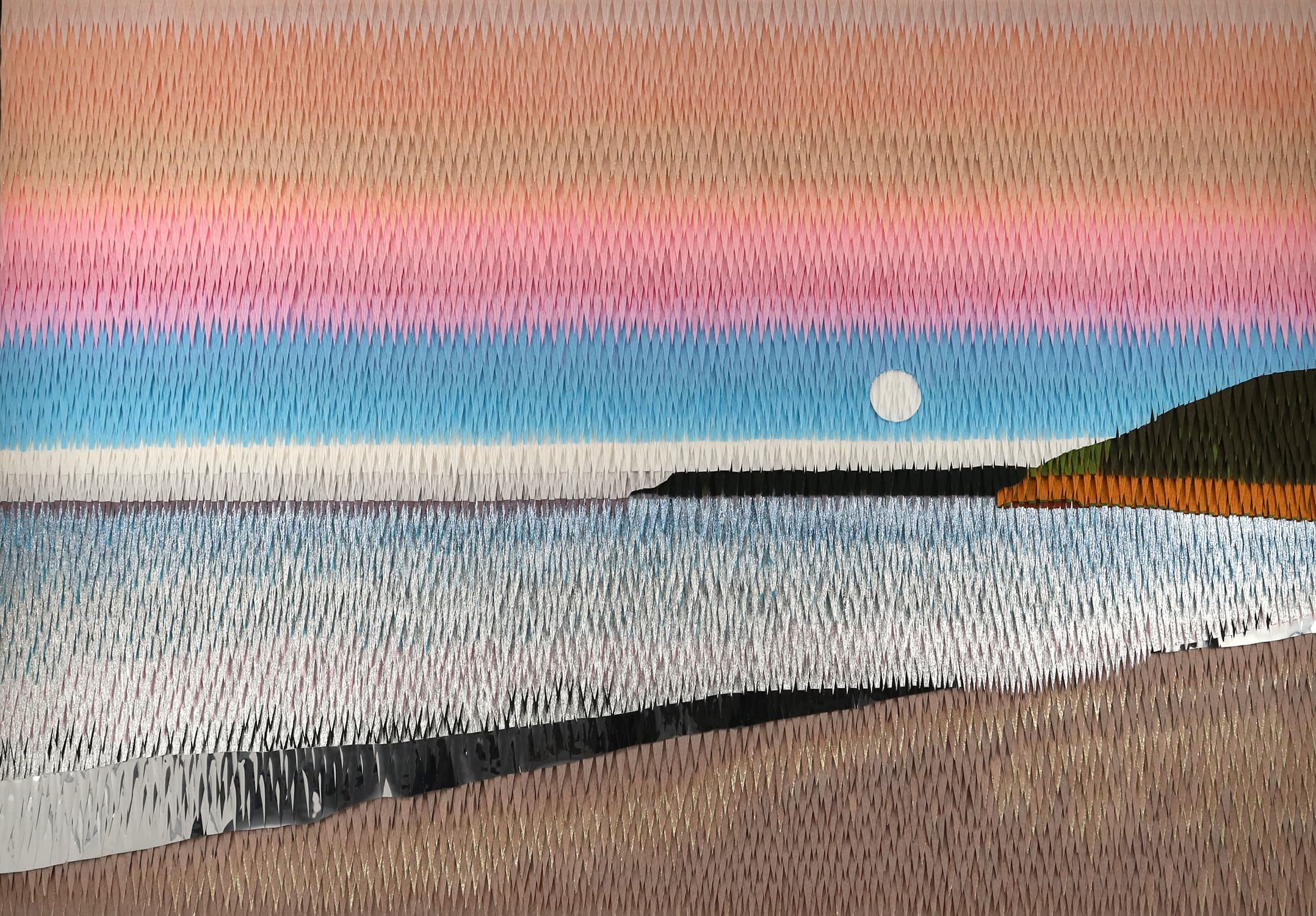
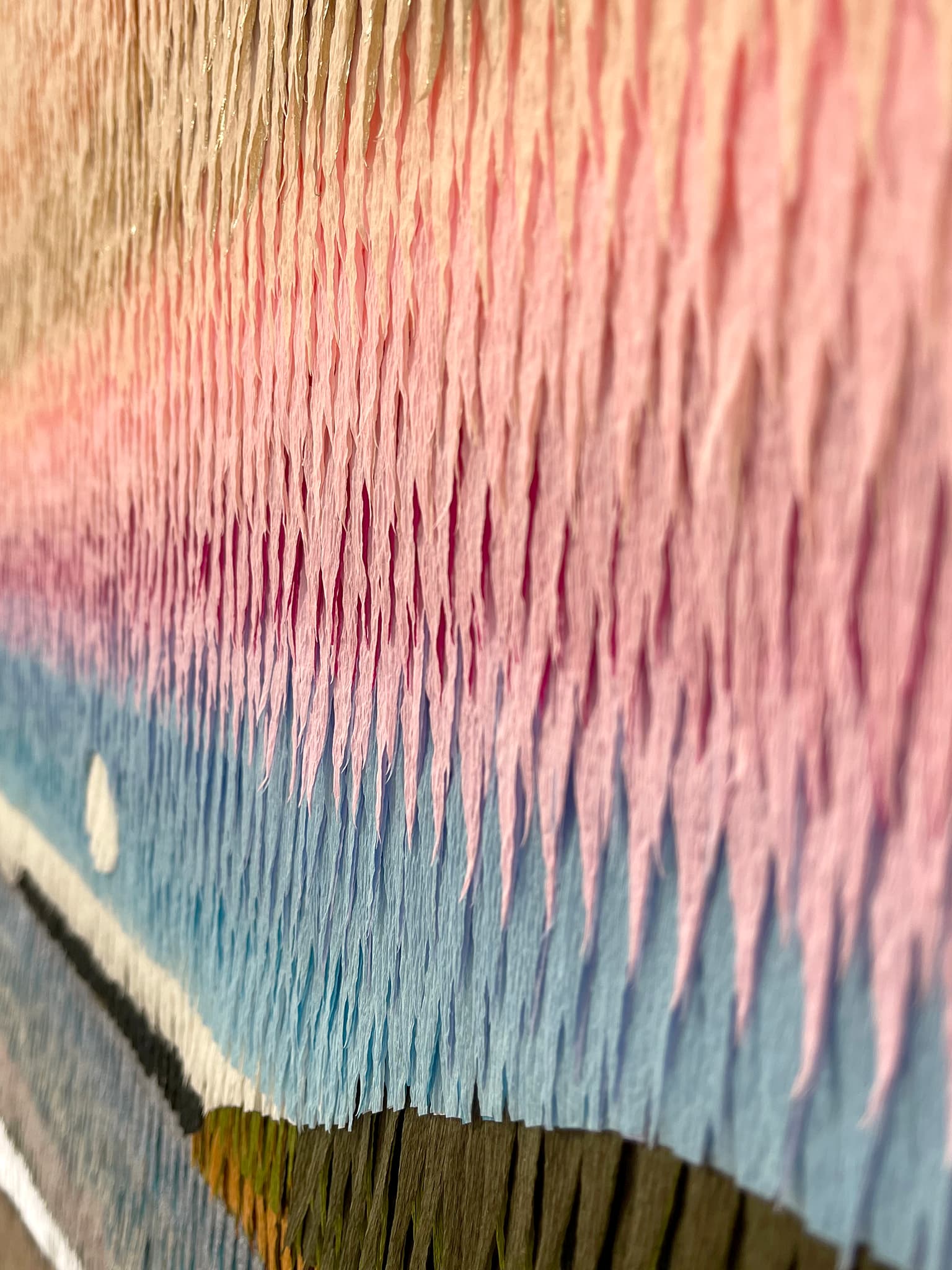












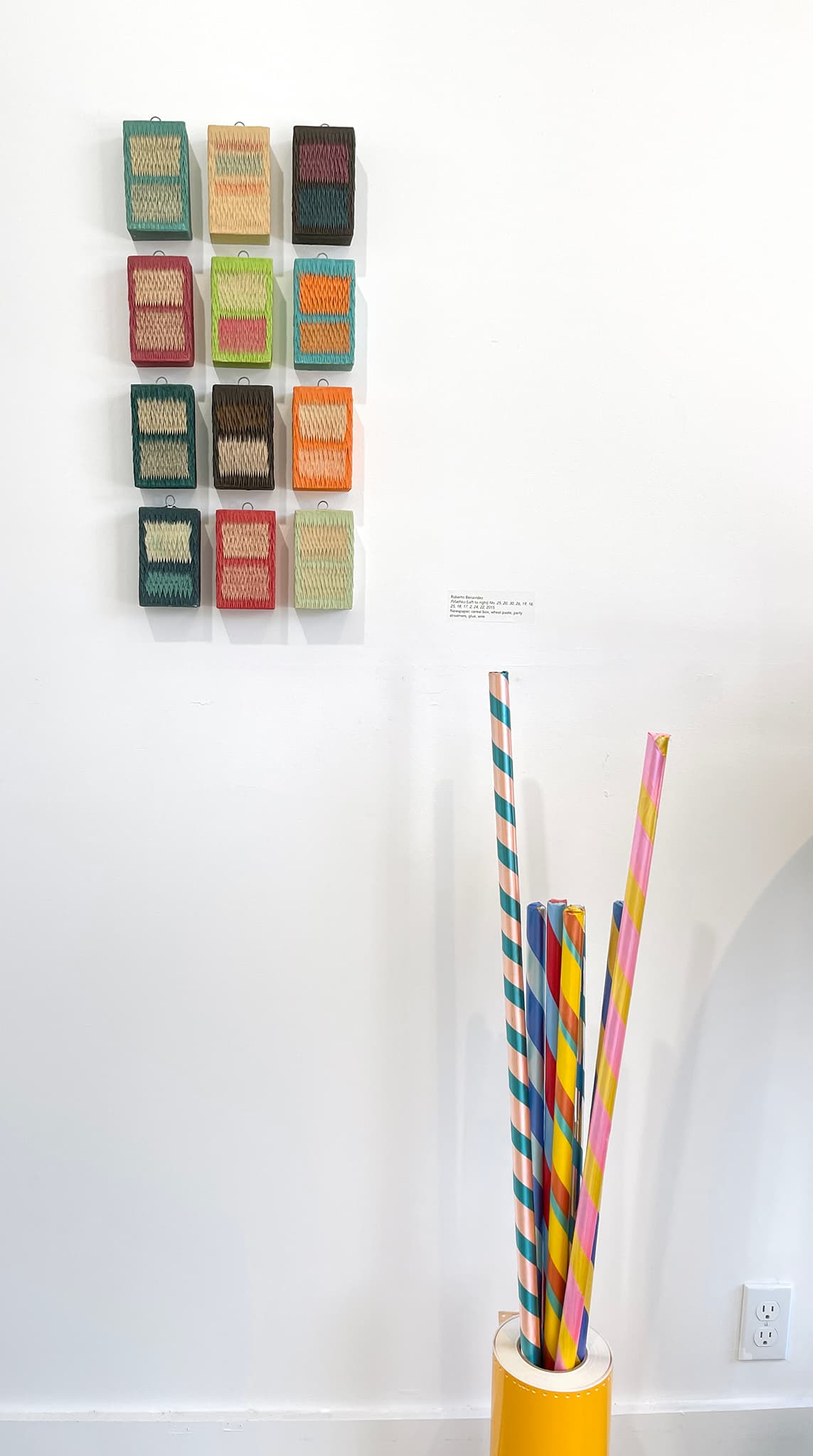
Piñatas in 2D
Francisco Palomares
Palomares is a first-generation Boyle Heights native who is inspired by the Spanish master painters and the way that brush strokes can convey visual narratives. He reframes present-day social struggles through the lens of art historical precedent.
Palomares highlights the beauty of the mundane and ordinary by taking his subjects out of context, making them worthy of a more thoughtful look.
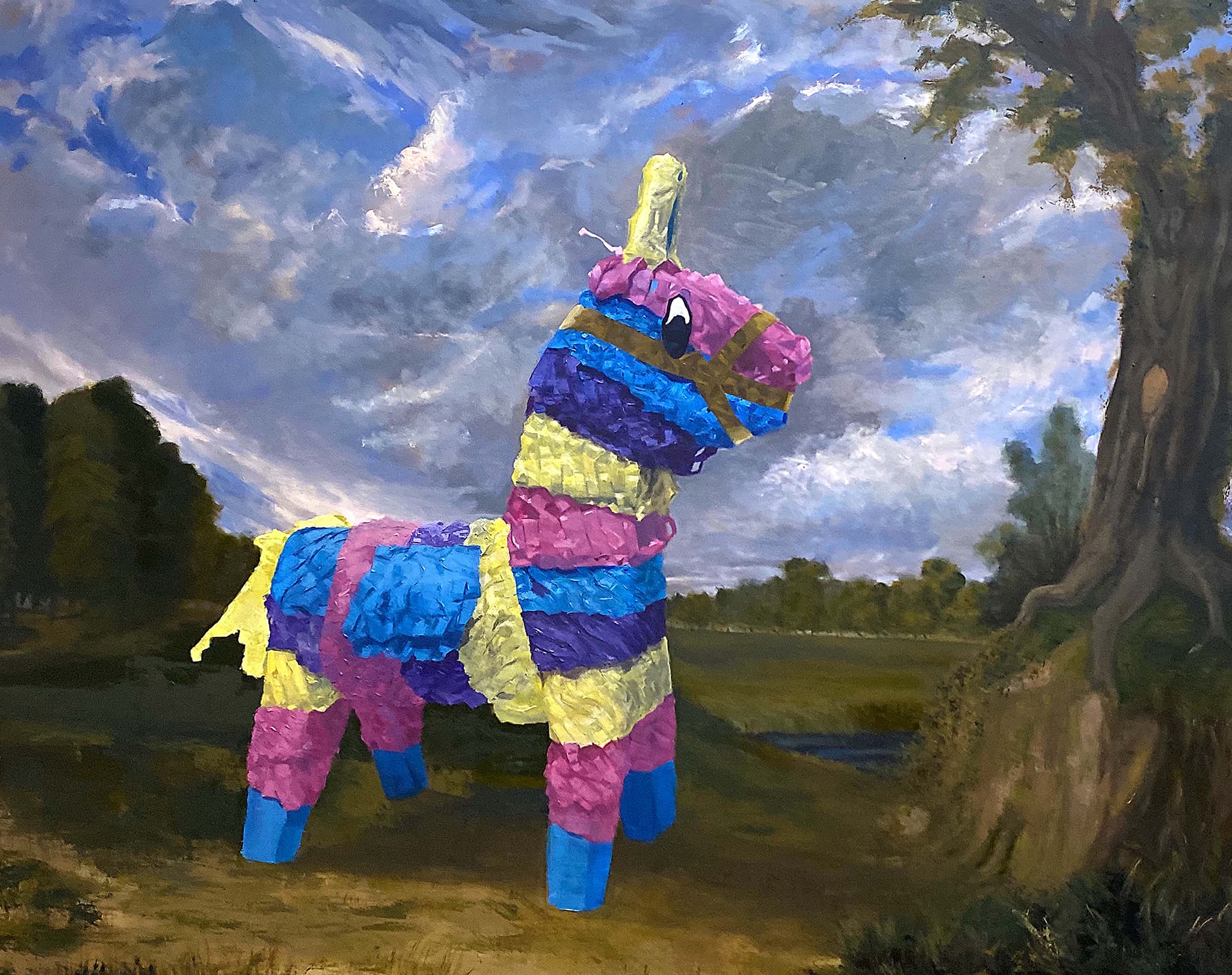
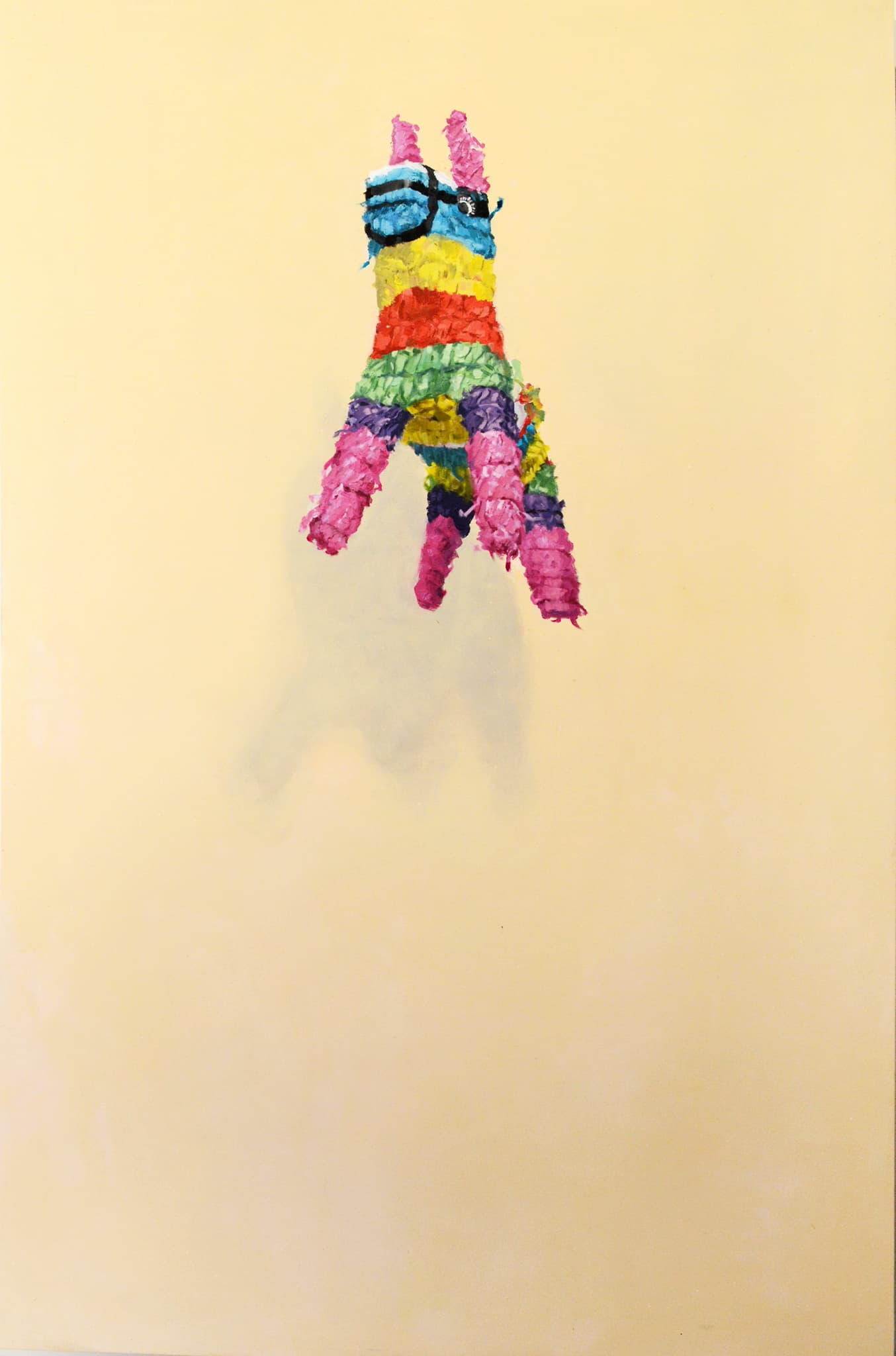
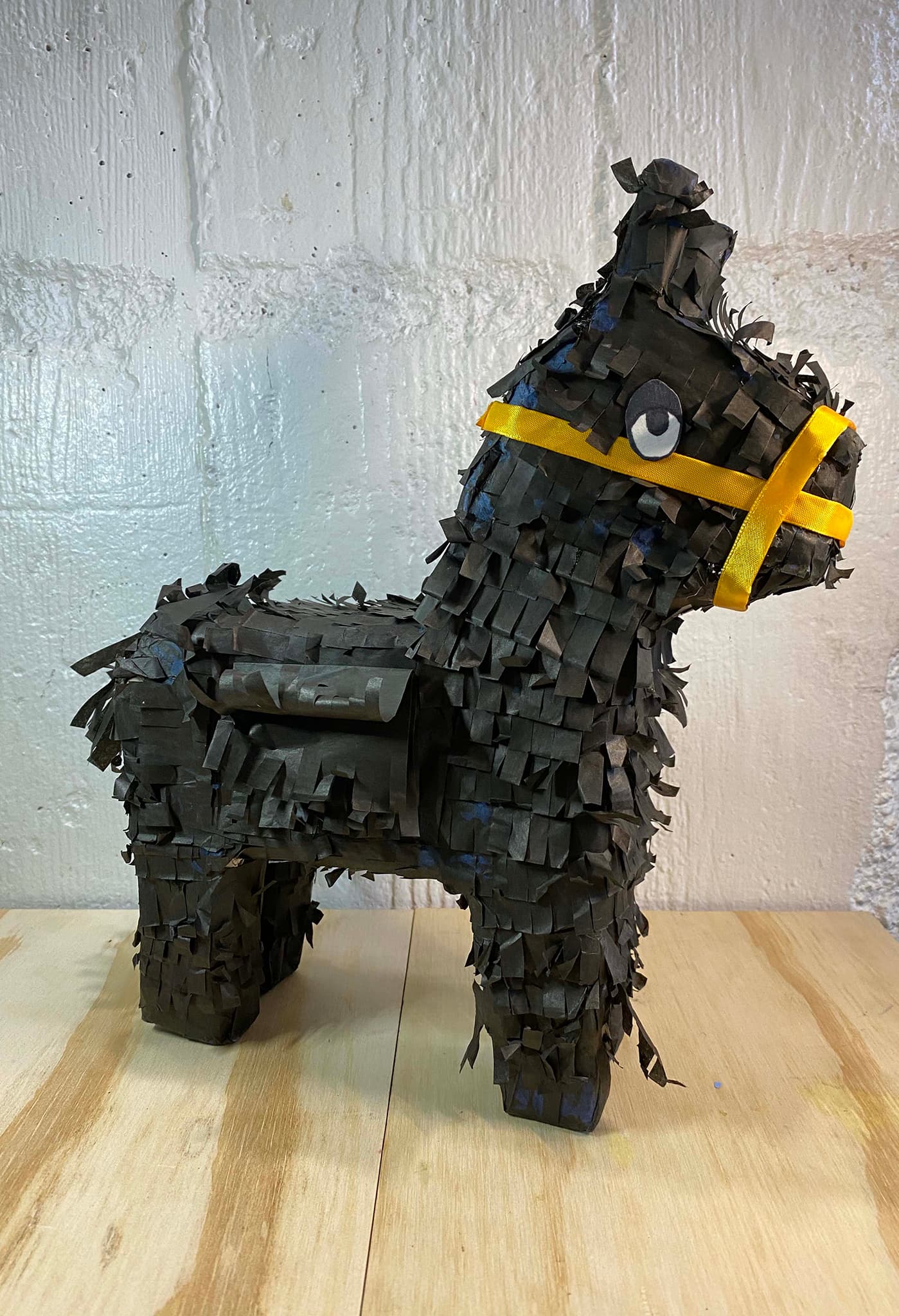
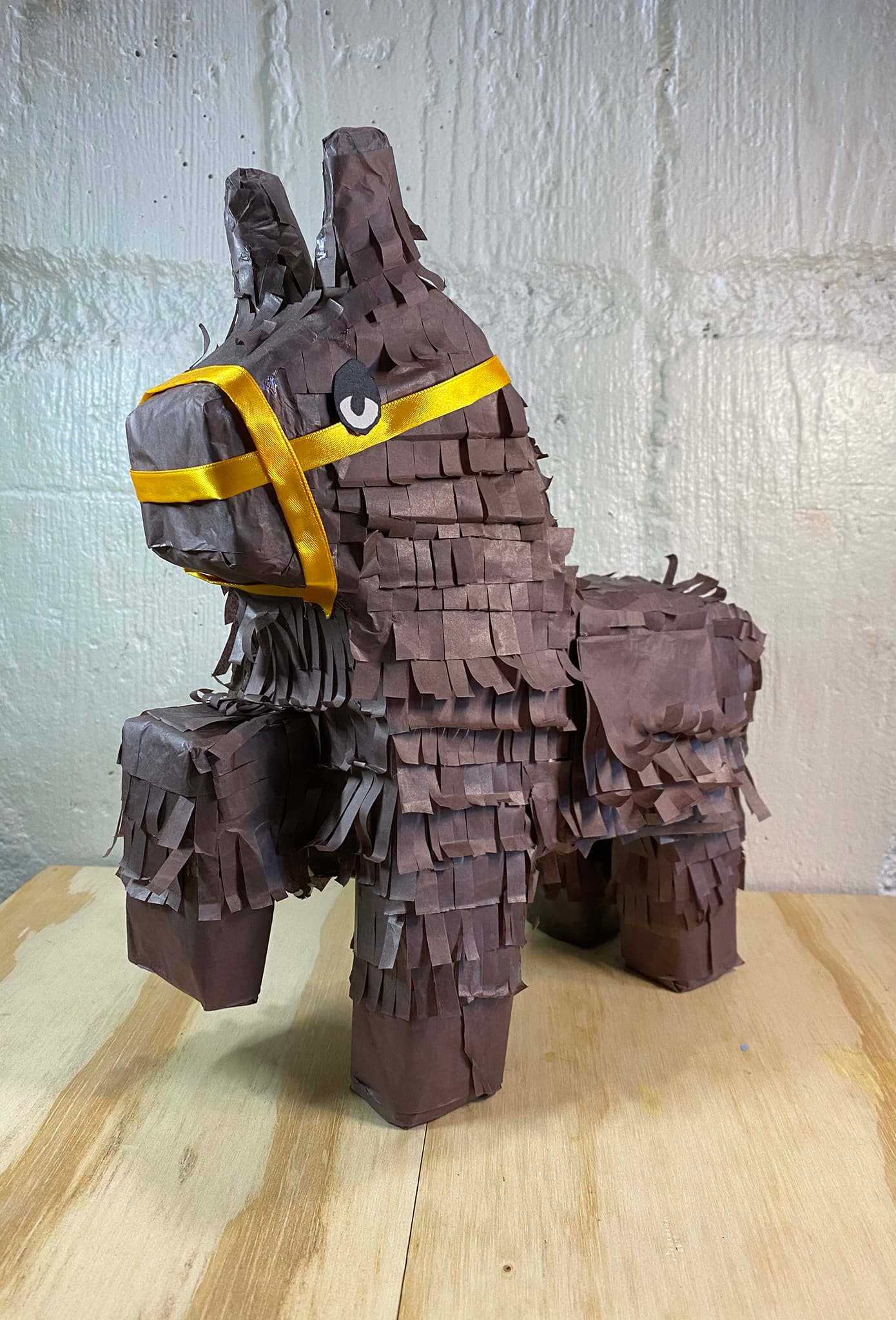
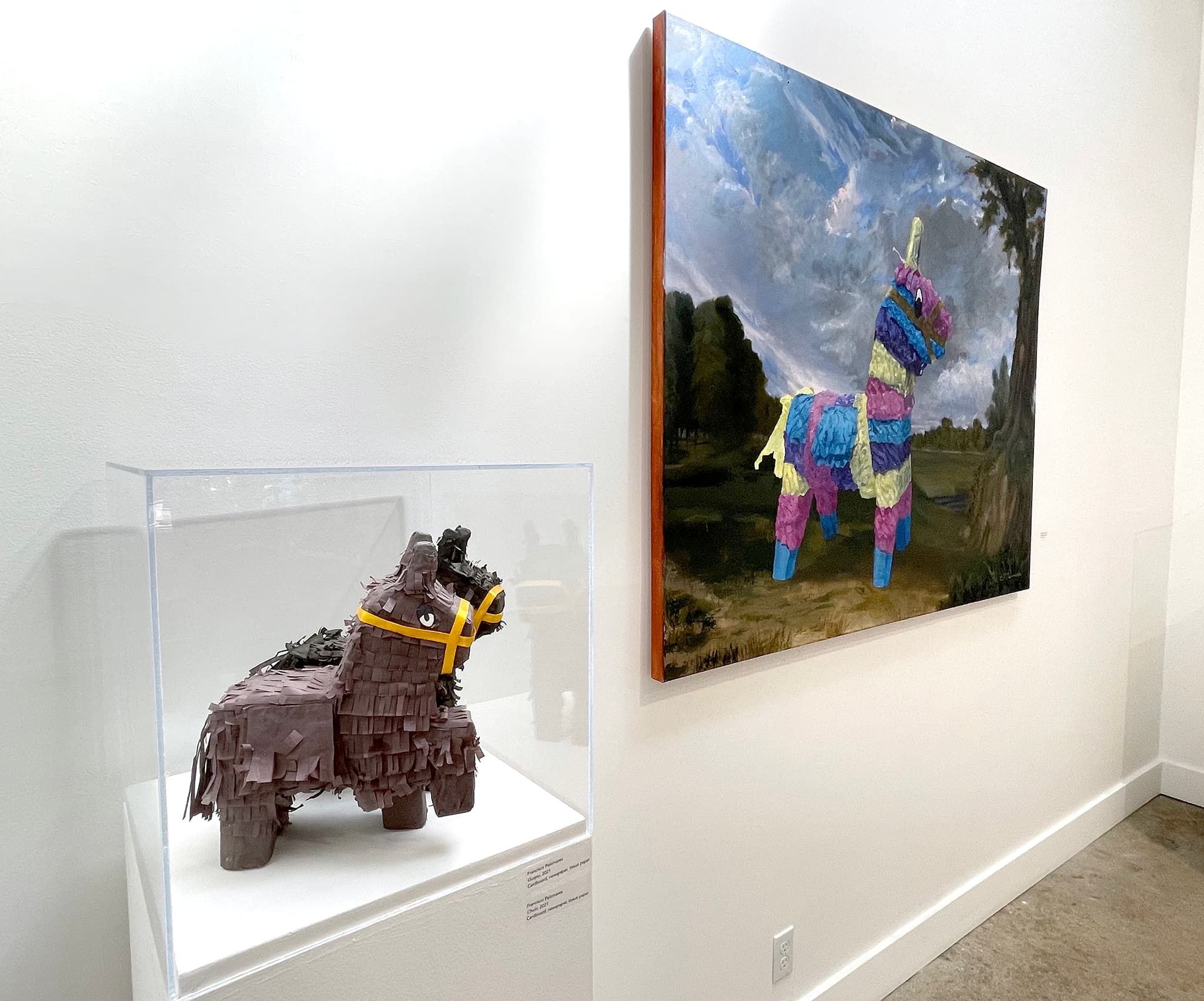
Political Piñatas
Diana Benavidez
Benavidez is a Binational artist who explores piñata-making as a method of expression and storytelling. Her piñatas reflect her experiences growing up along the San Diego/Tijuana border, her identity, and culture. Her work is known for introducing materials not commonly found in traditional piñatas including media and technology.
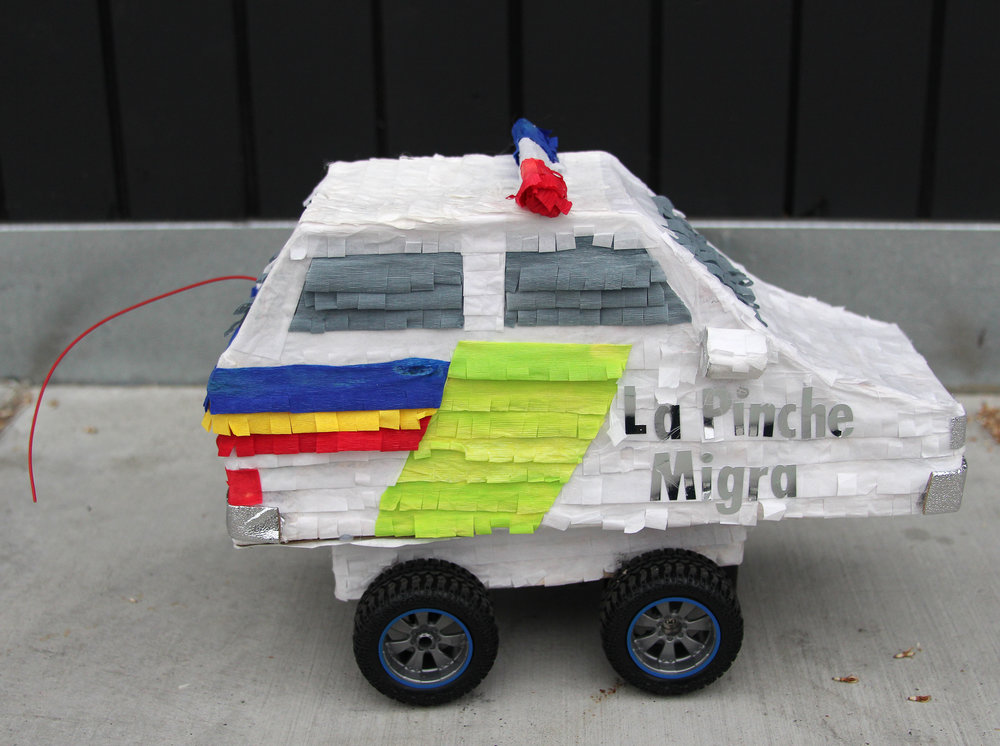
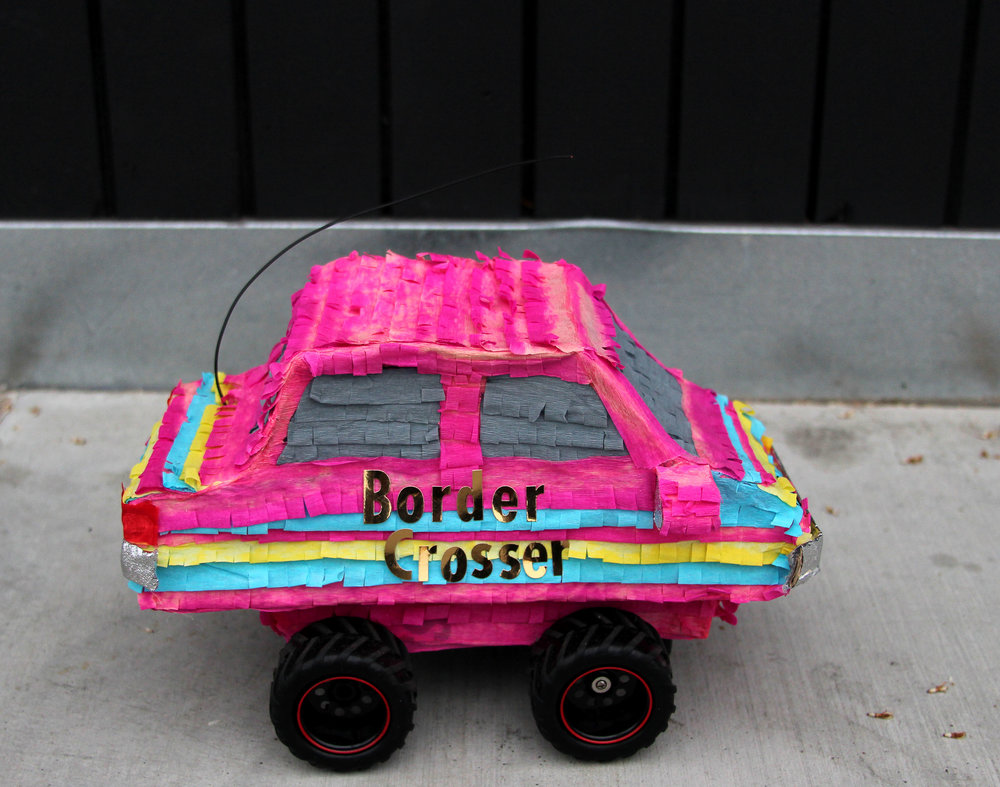
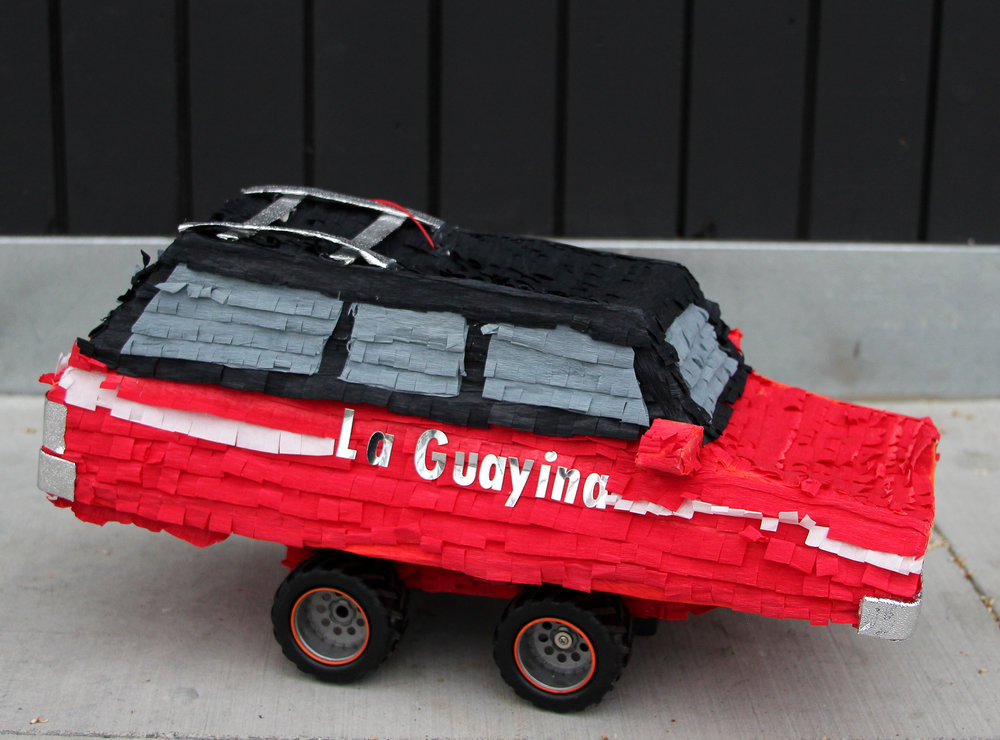
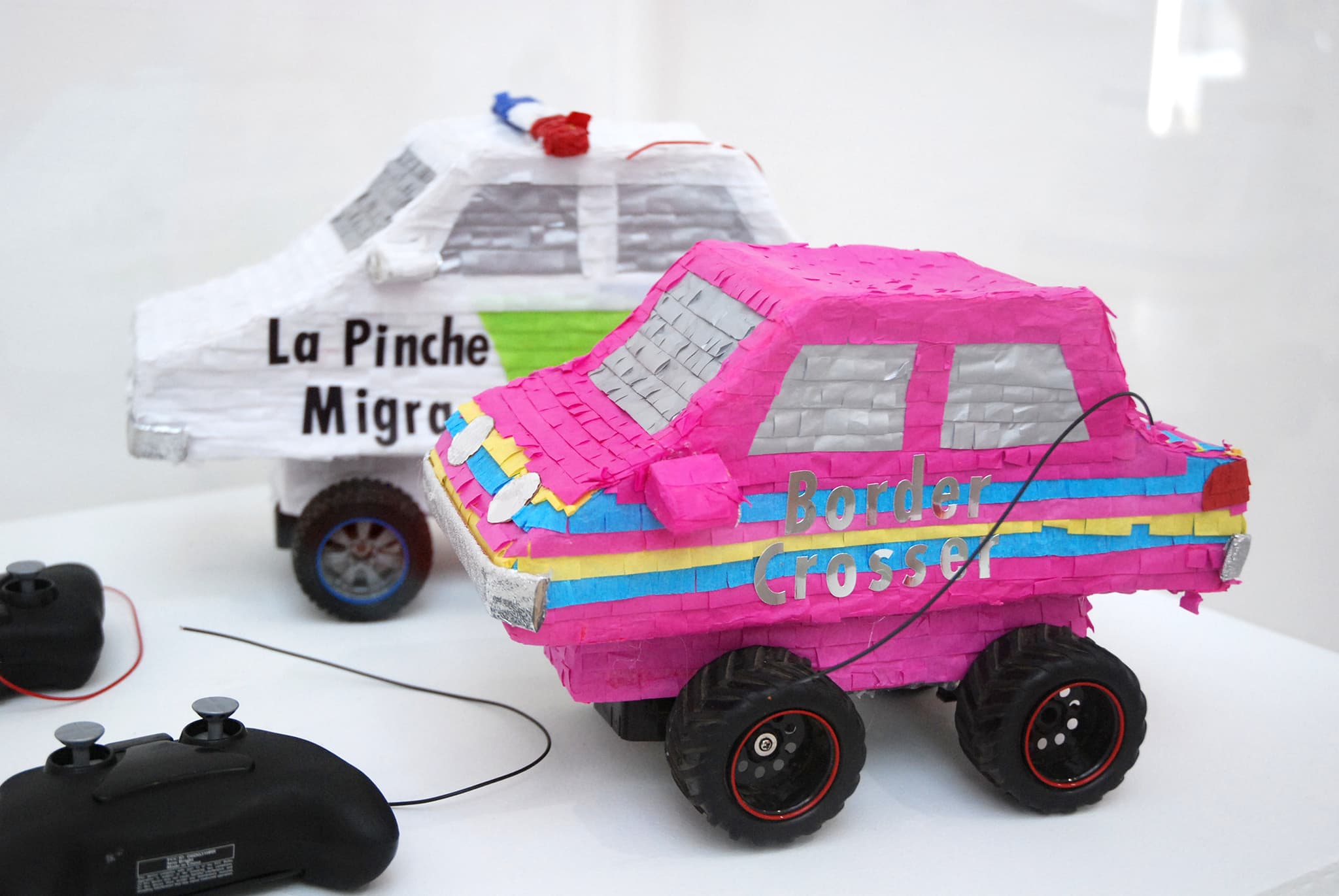
Piñatas and Pop Culture
Ana Serrano
Serrano is a first-generation Mexican American originally from Los Angeles and now based in Portland. Inspired by the intersection of her dual cultural identities, she is best known for using brightly-colored cardboard and paper to highlight elements of Latinx culture.
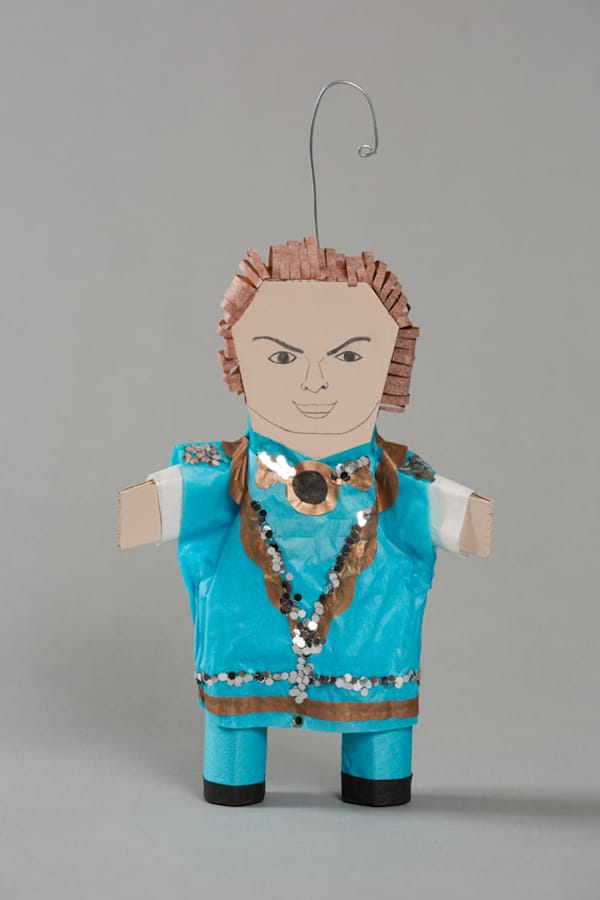
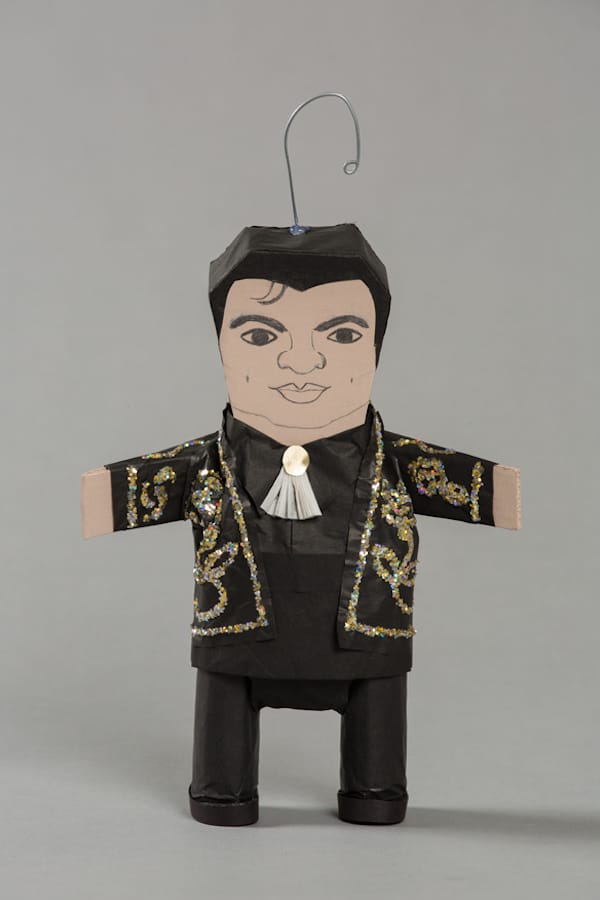
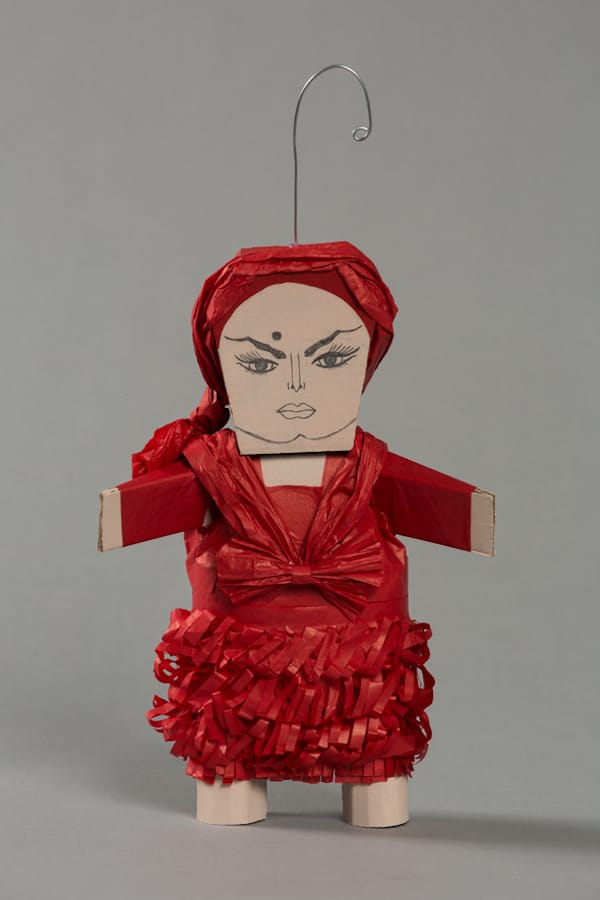
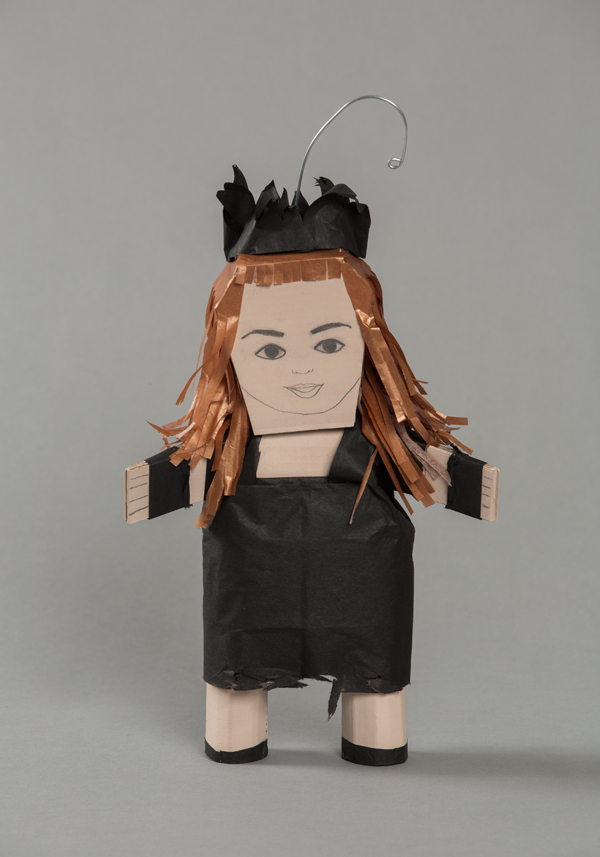
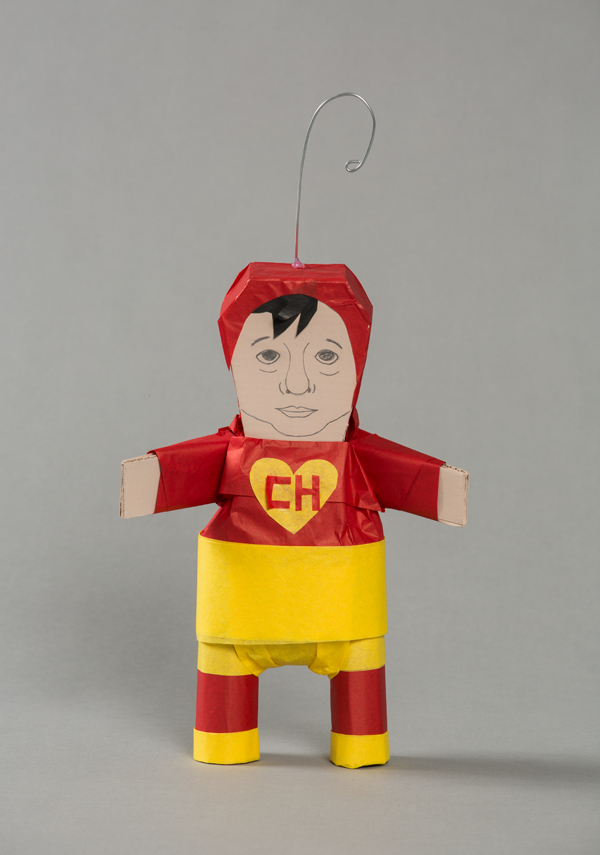
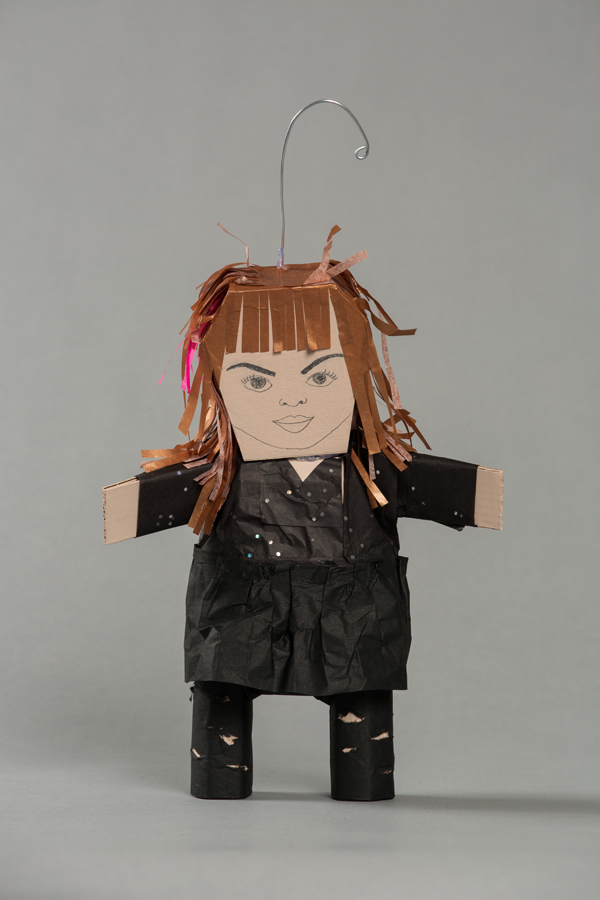
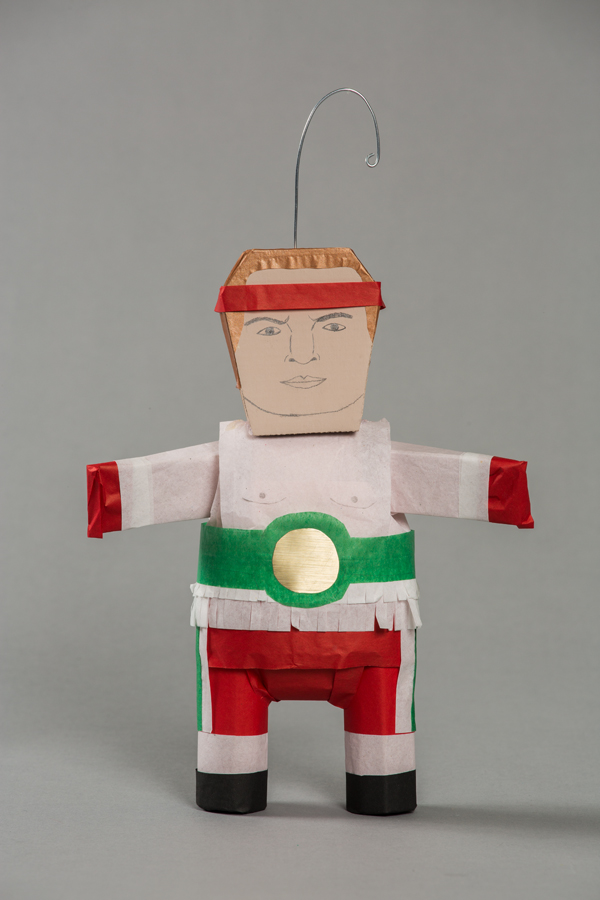
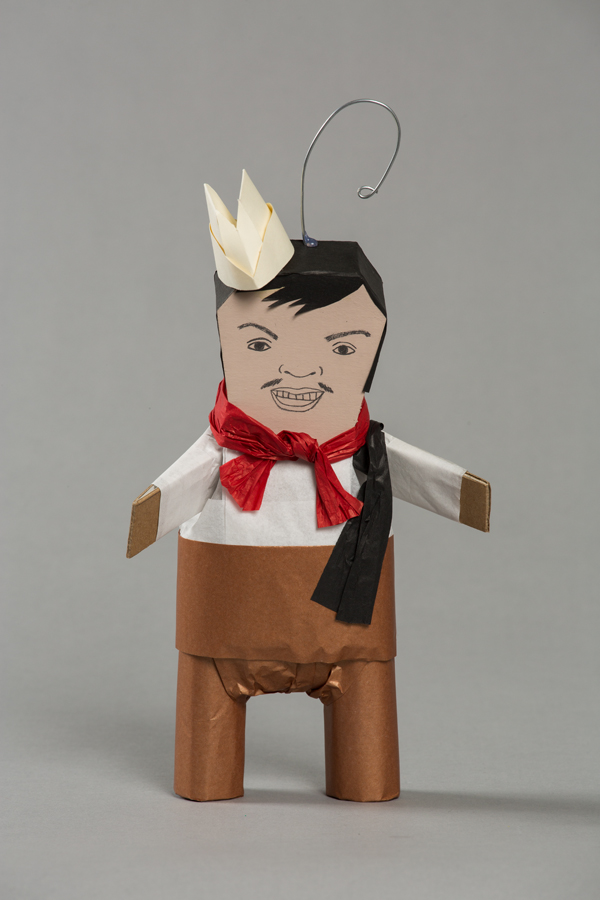
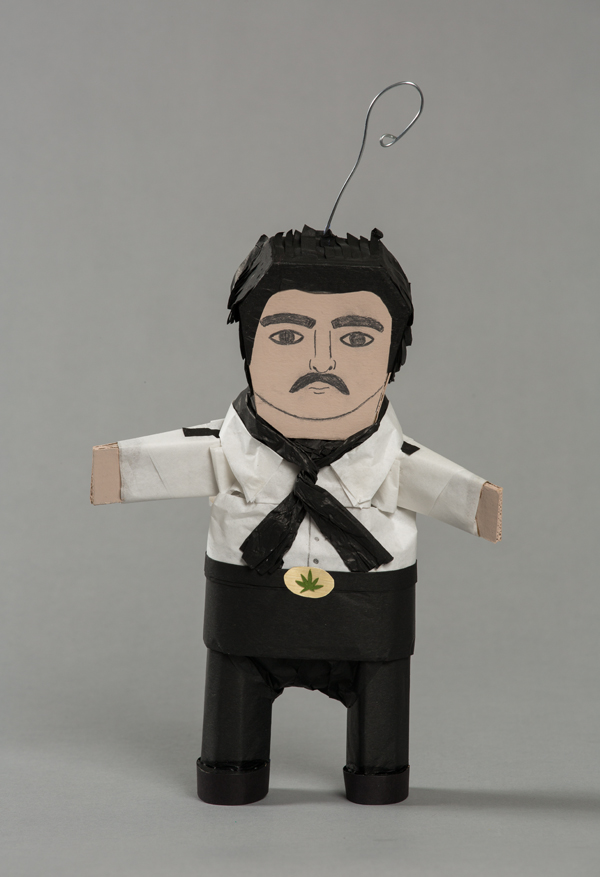
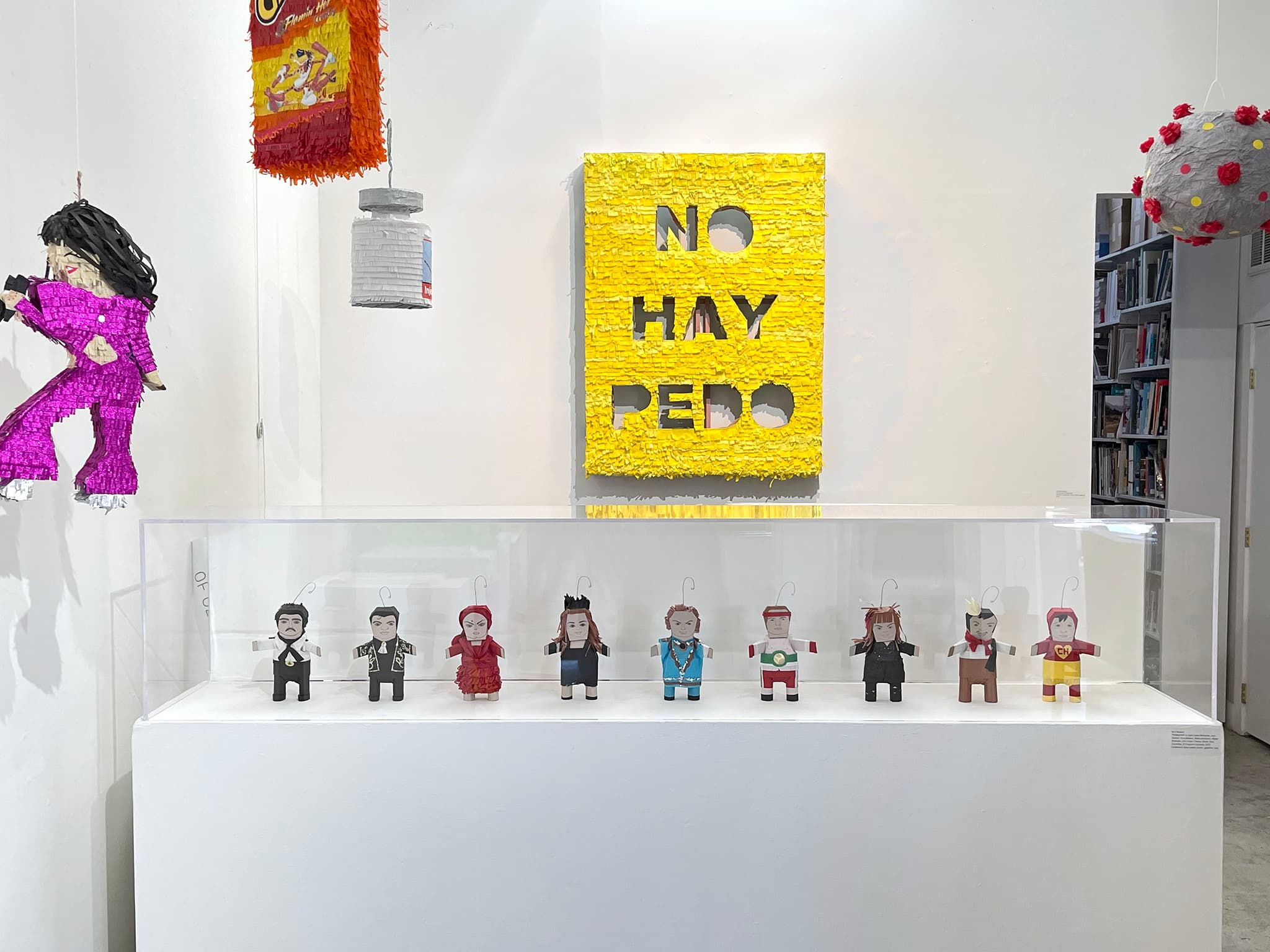
Piñata Landscapes
Justin Favela
Las Vegas artist Favela is best known for large-scale installations and sculptures that manifest his interactions with American pop culture and the Latinx experience. His painting series pays homage to the legacy of Mexican and Latin American masterworks.
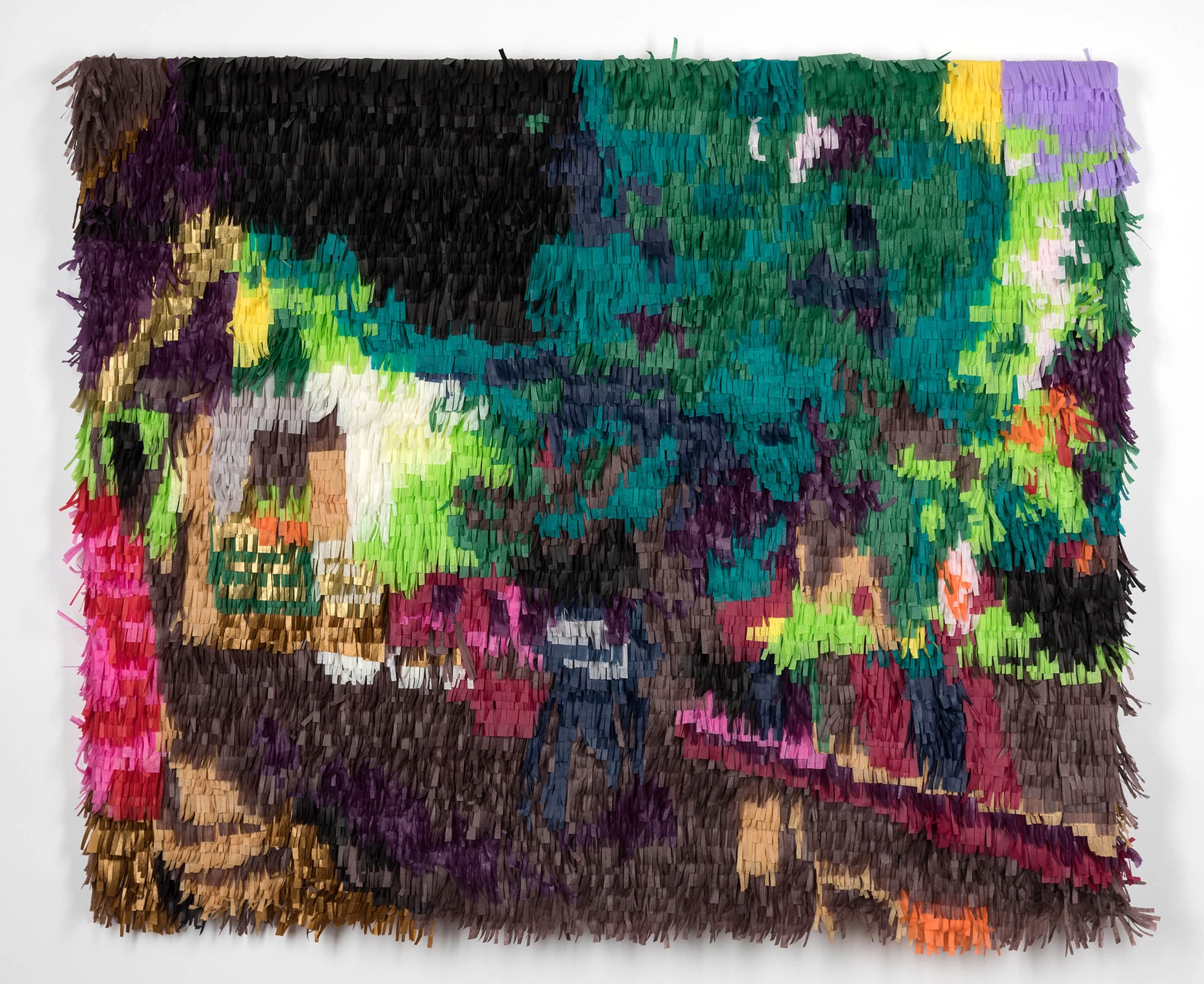
Sita Bhaumik
Bhaumik uses art as a strategy to connect memory and history with the urgent social issues of our time. Estamos Contra el Muro / We Are Against the Wall was a collaborative project she led that was installed at Southern Exposure gallery in San Francisco. In response to the 2016 election, a wall built of hand-crafted piñatas in the form of cinder blocks was installed and ultimately, at the close of the exhibition, community members gathered to destroy the proxy wall as one would a piñata, in an act of defiance against the proposed wall at the border of the US and Mexico.
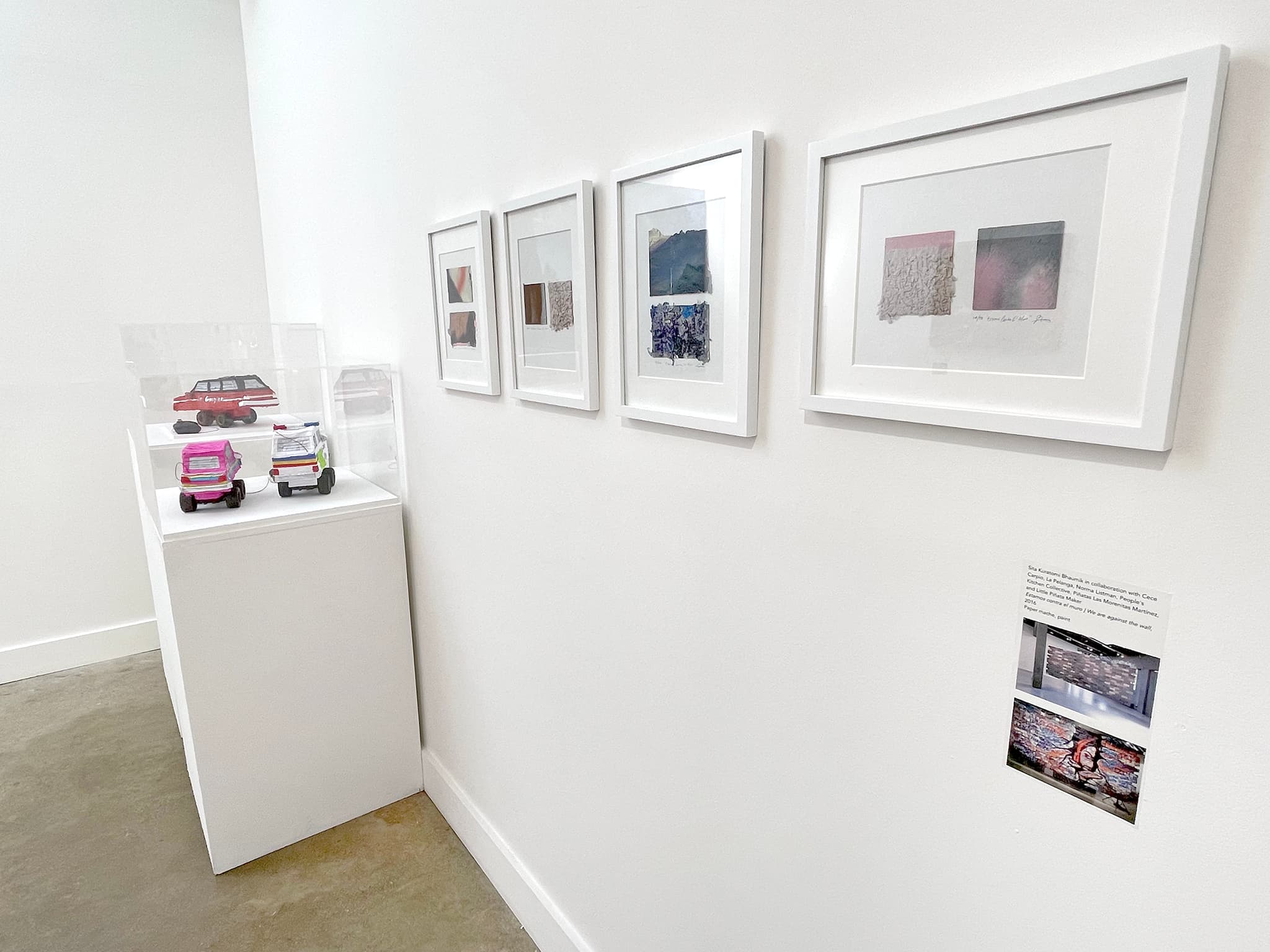
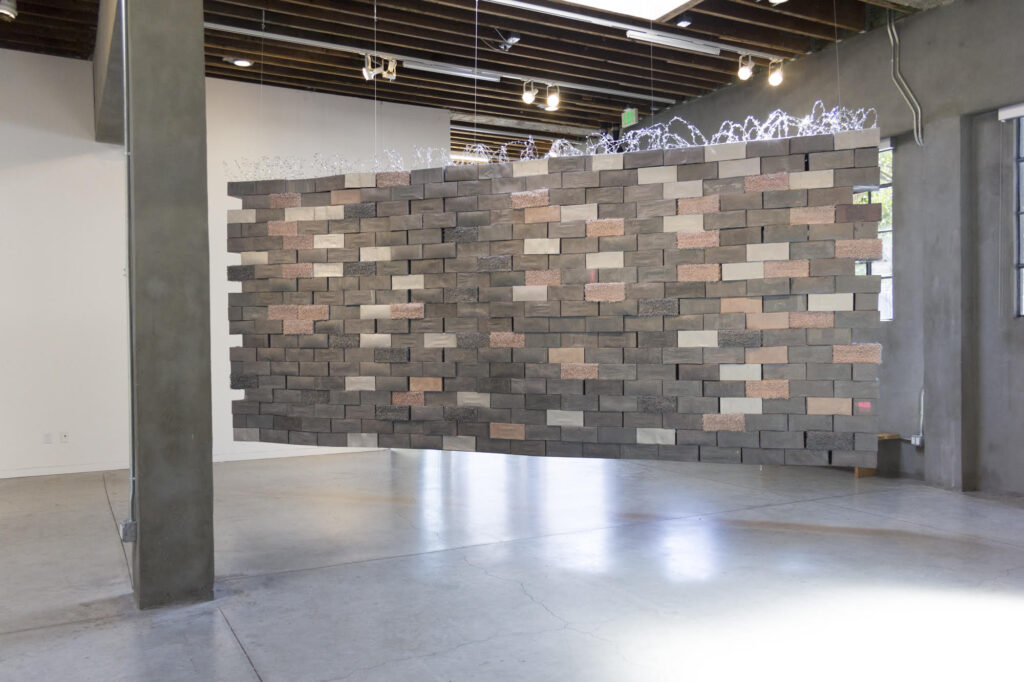

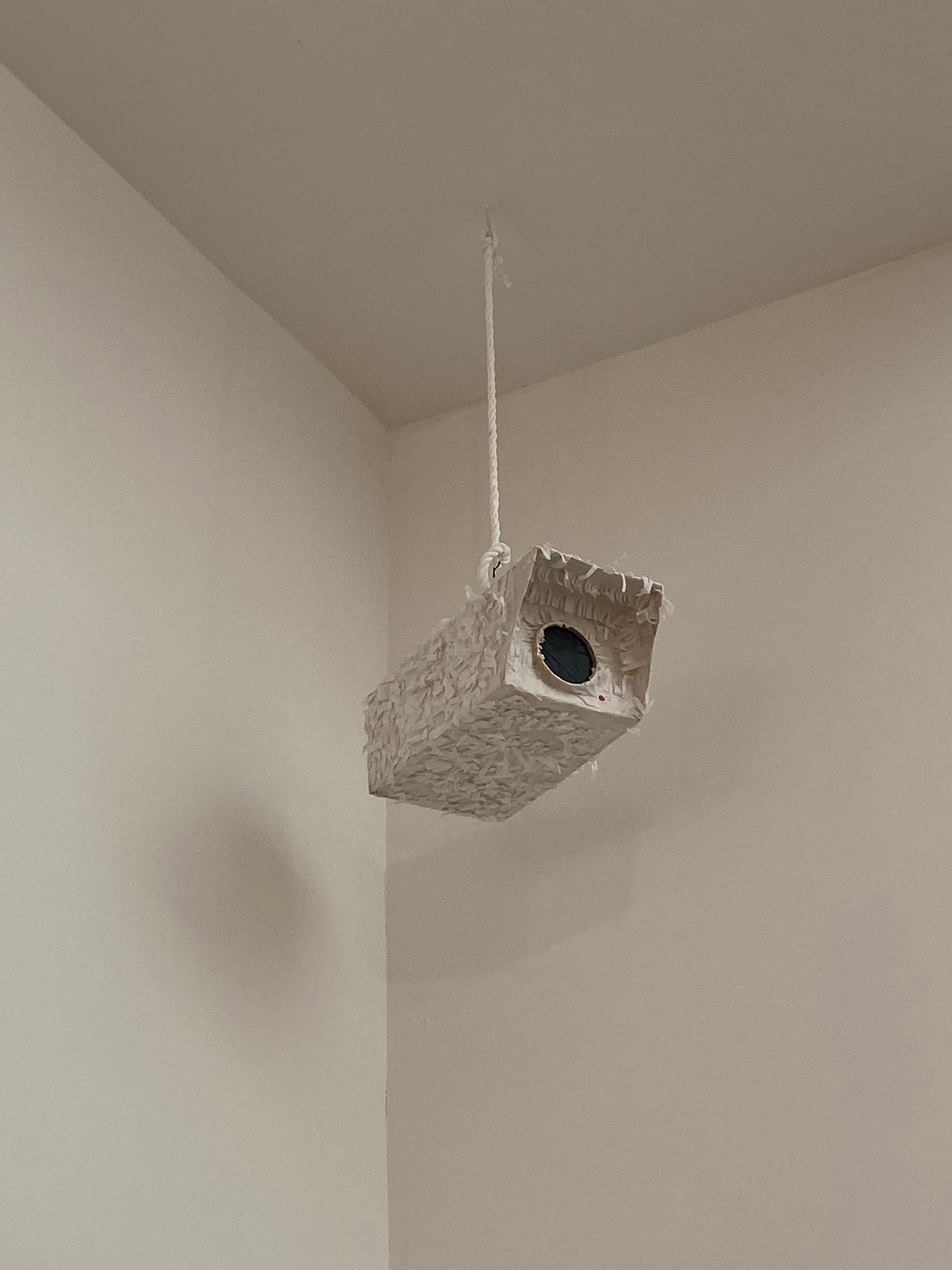
Isaias Rodriguez
Originally from Boyle Heights, CA, Rodríguez is a multimedia artist known as Little Piñata Maker. Several years ago, he made his first piñata to hang from his car’s rear view mirror and he now creates limited edition series and custom orders, each piñata no larger than about 4 inches tall and wide.
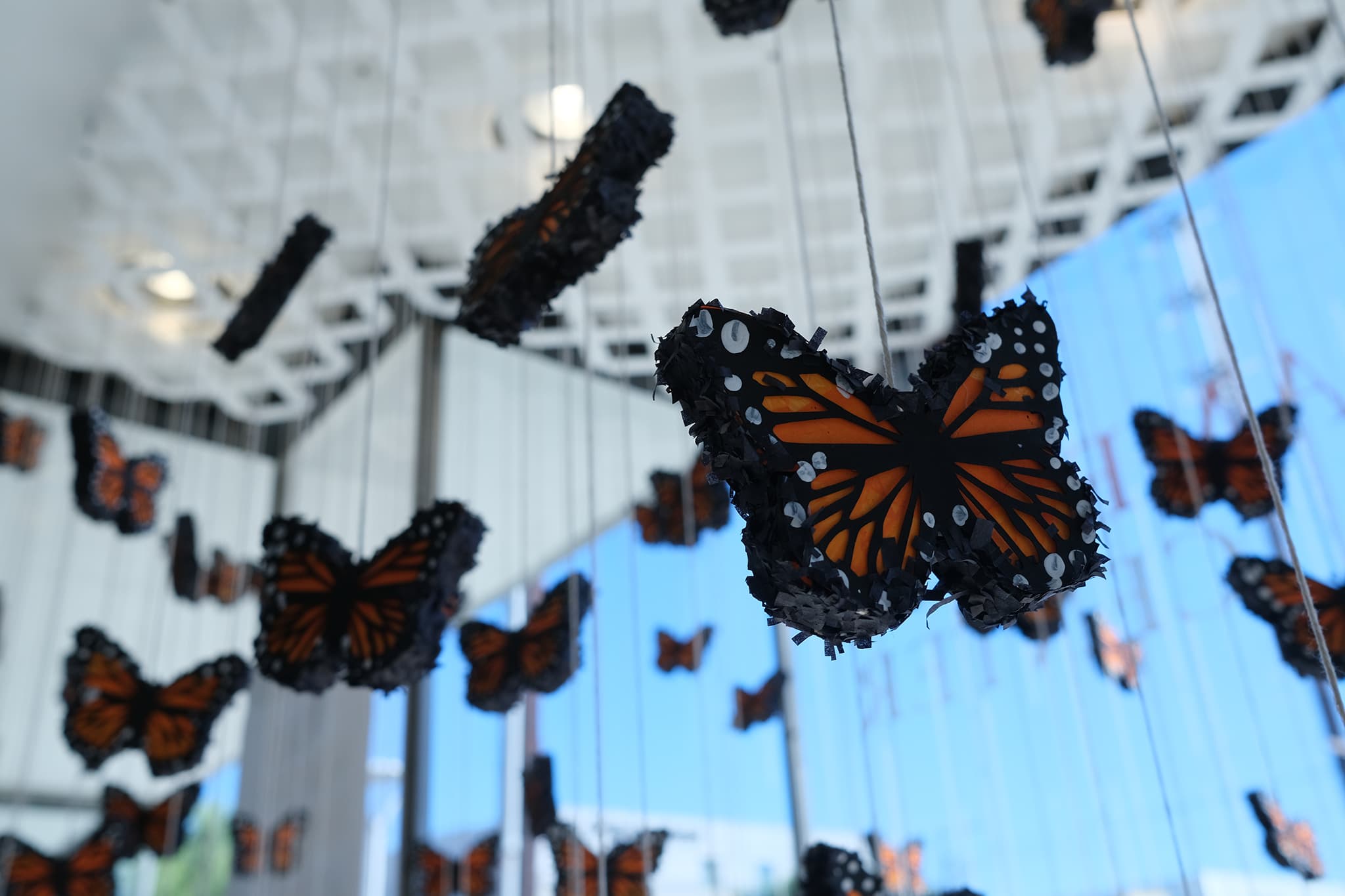
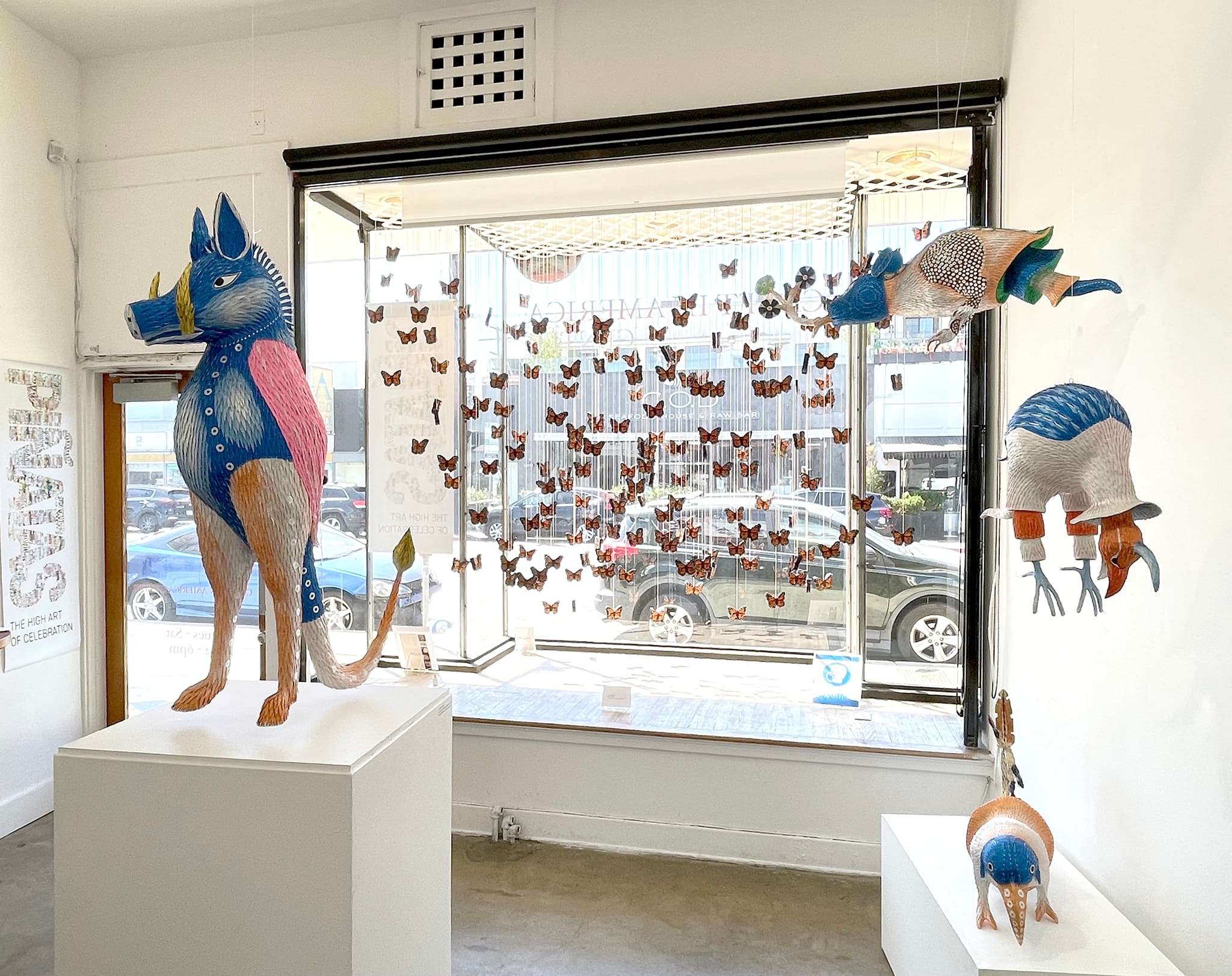
Piñatas and Permanence
Piñata Design Studio
Founded by Yesenia Prieto and co-owned with Mia Baez, La Piñata Design Studio is led by third generation Los Angeles piñata makers and designers reinventing the traditional craft of piñata making through their custom piñatas, sculptures, masks, and installations. They create larger than life installation projects for companies and museums such as LACMA, Microsoft, Google, and celebrities such as Rihanna.
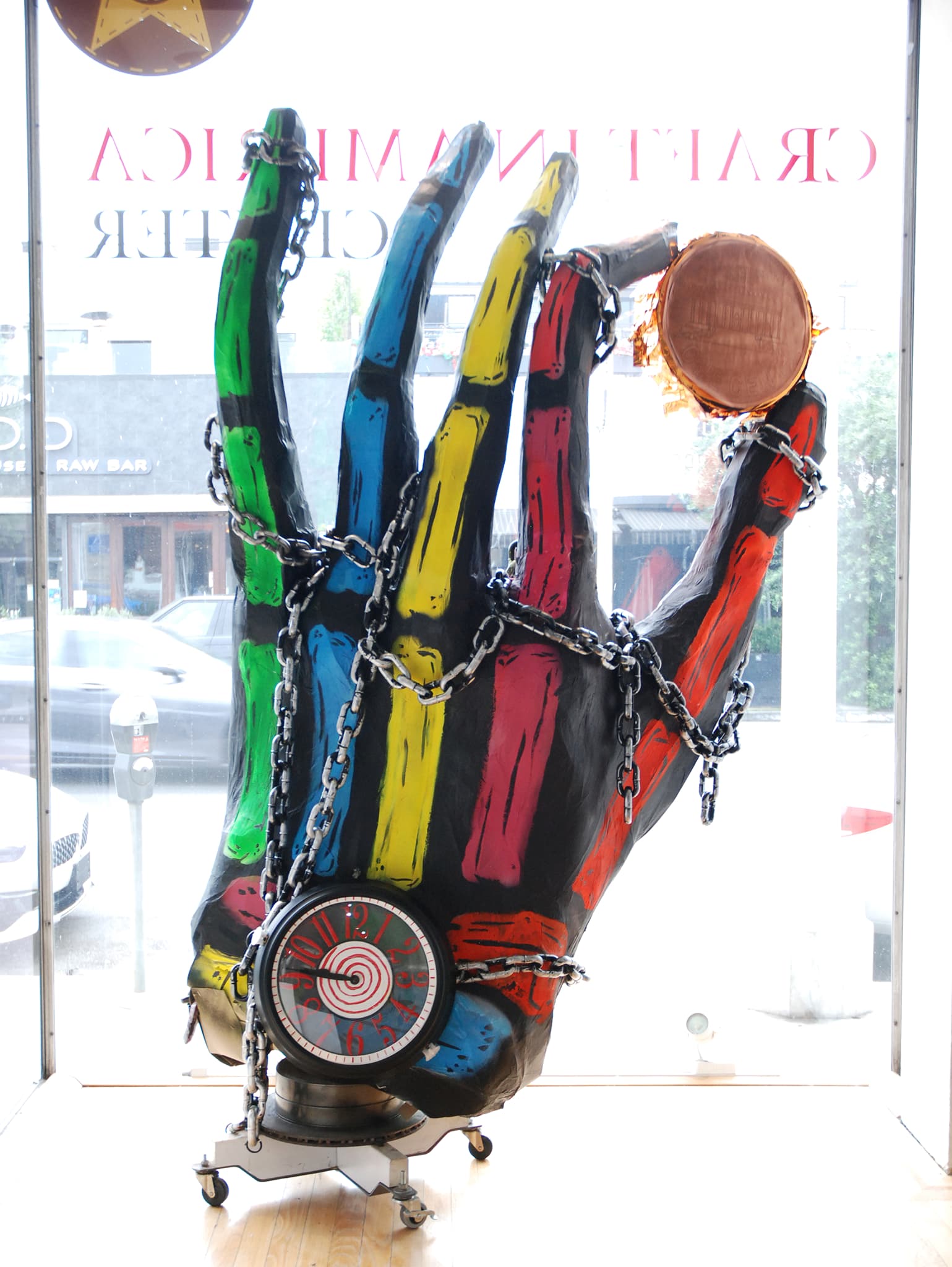
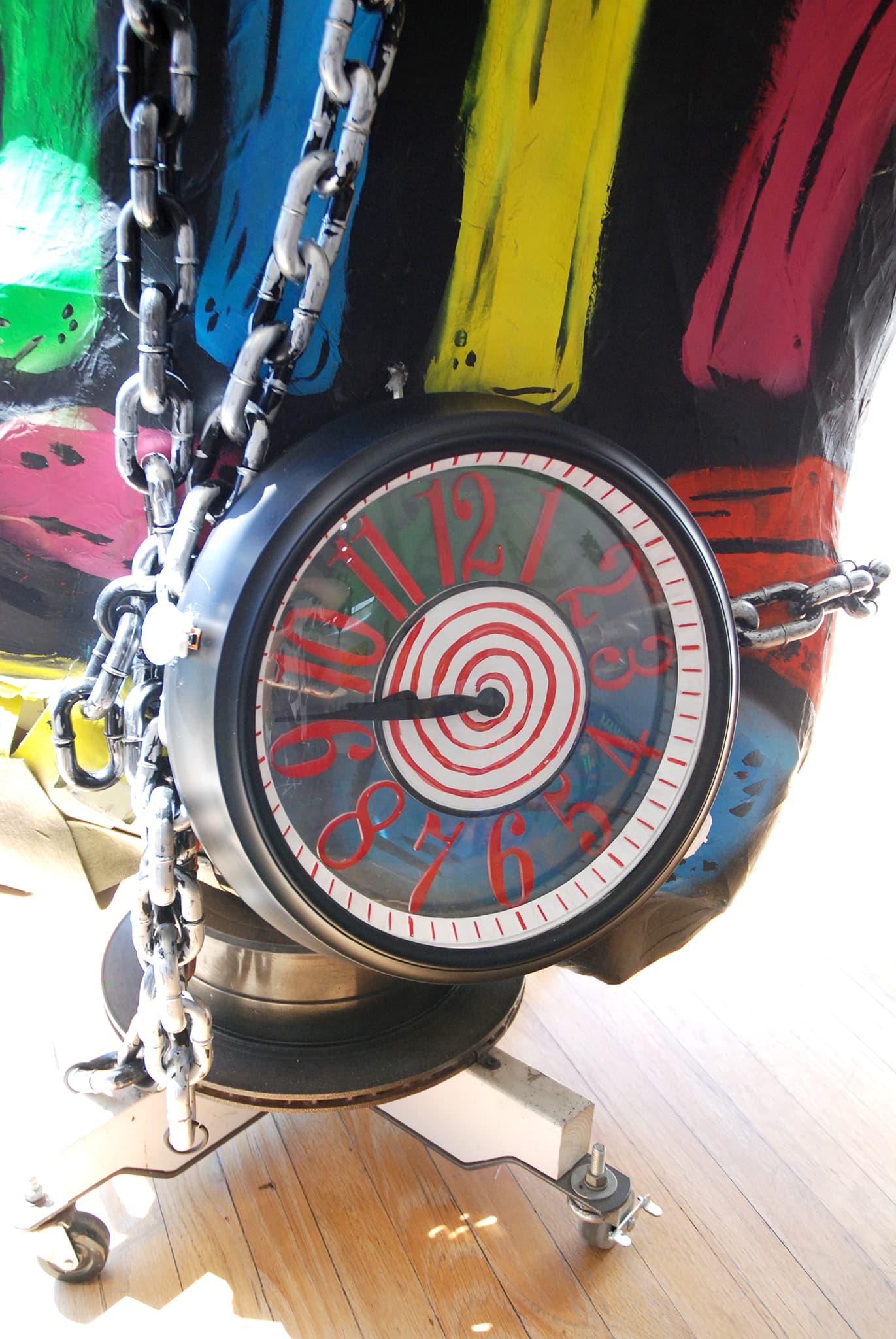
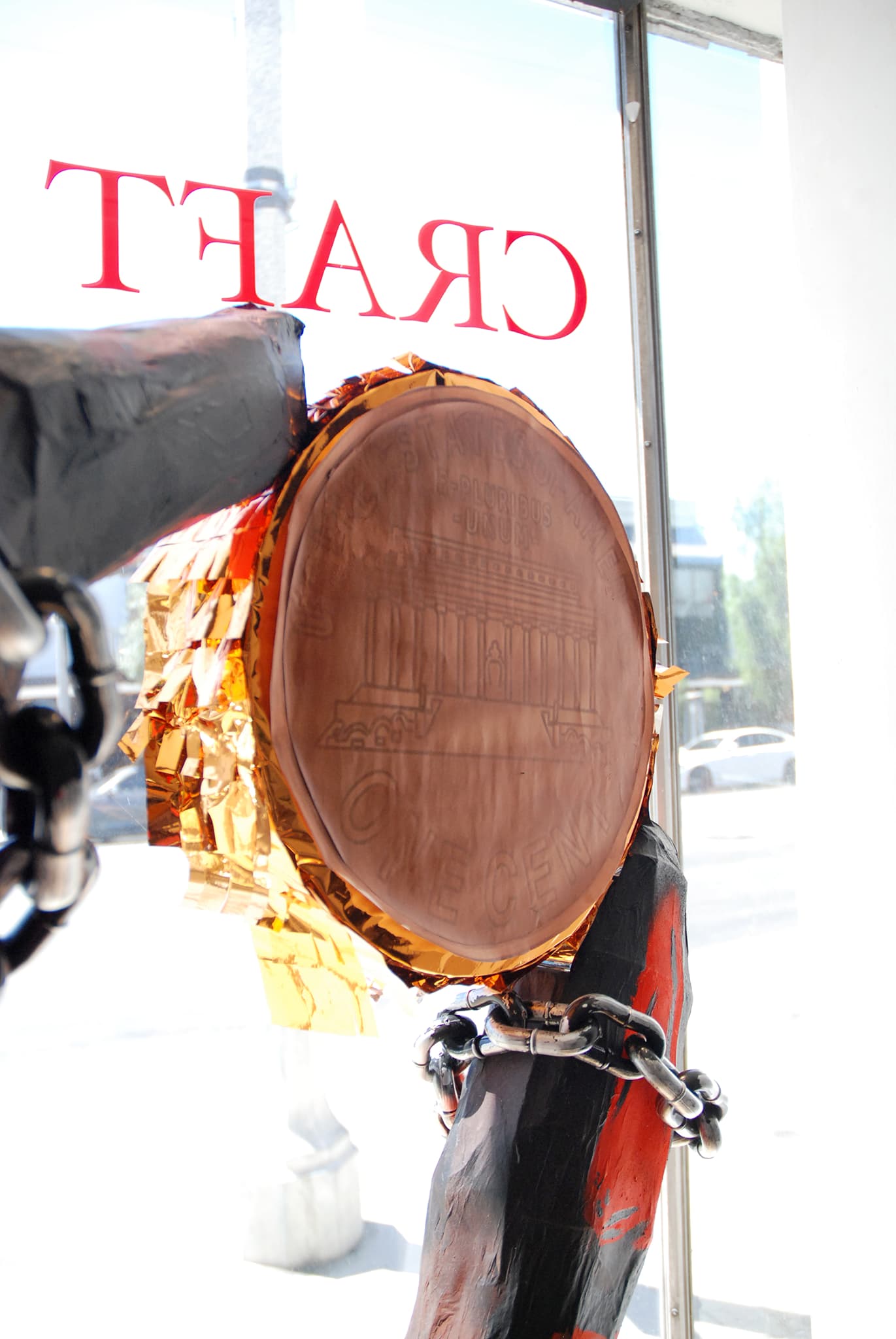
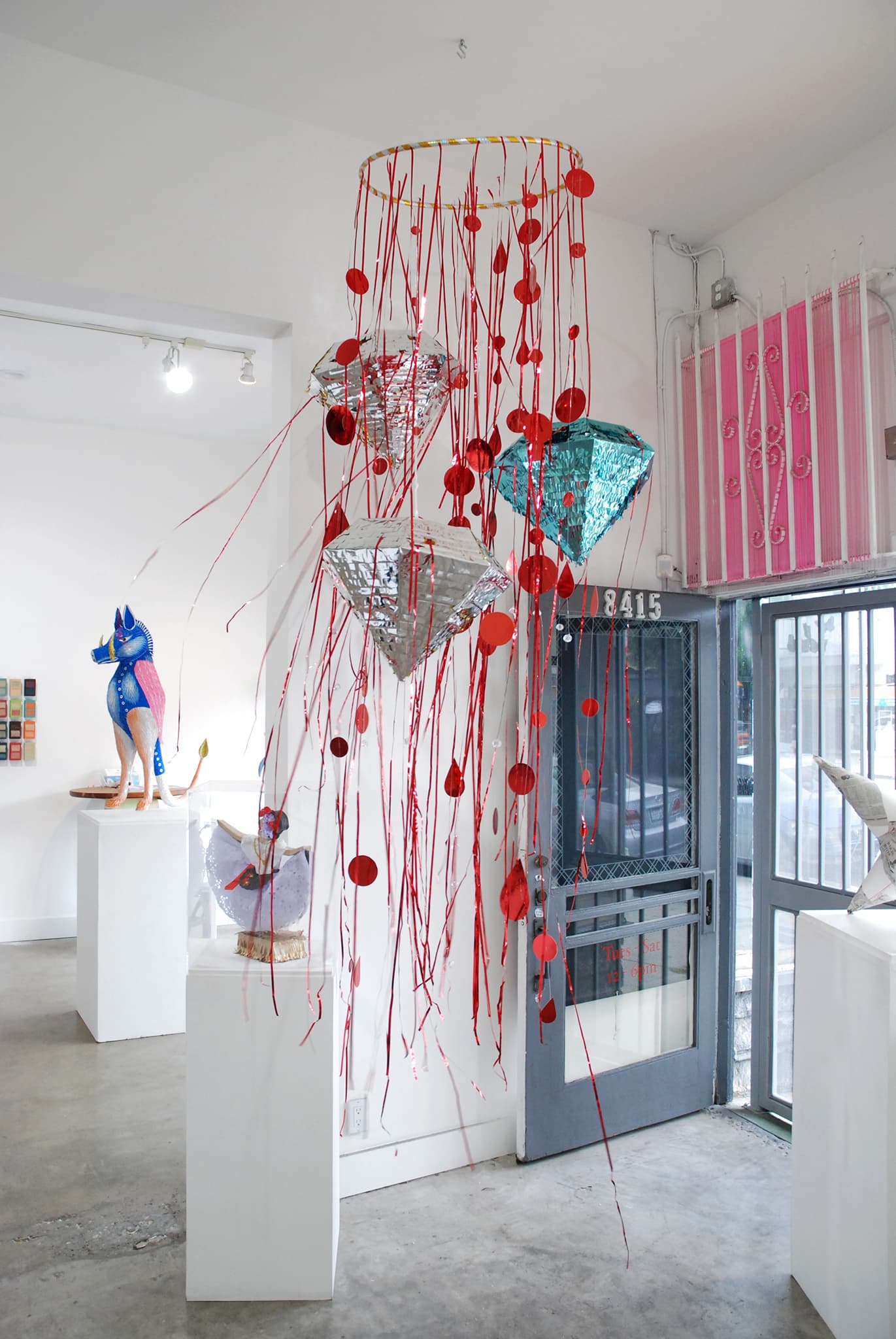
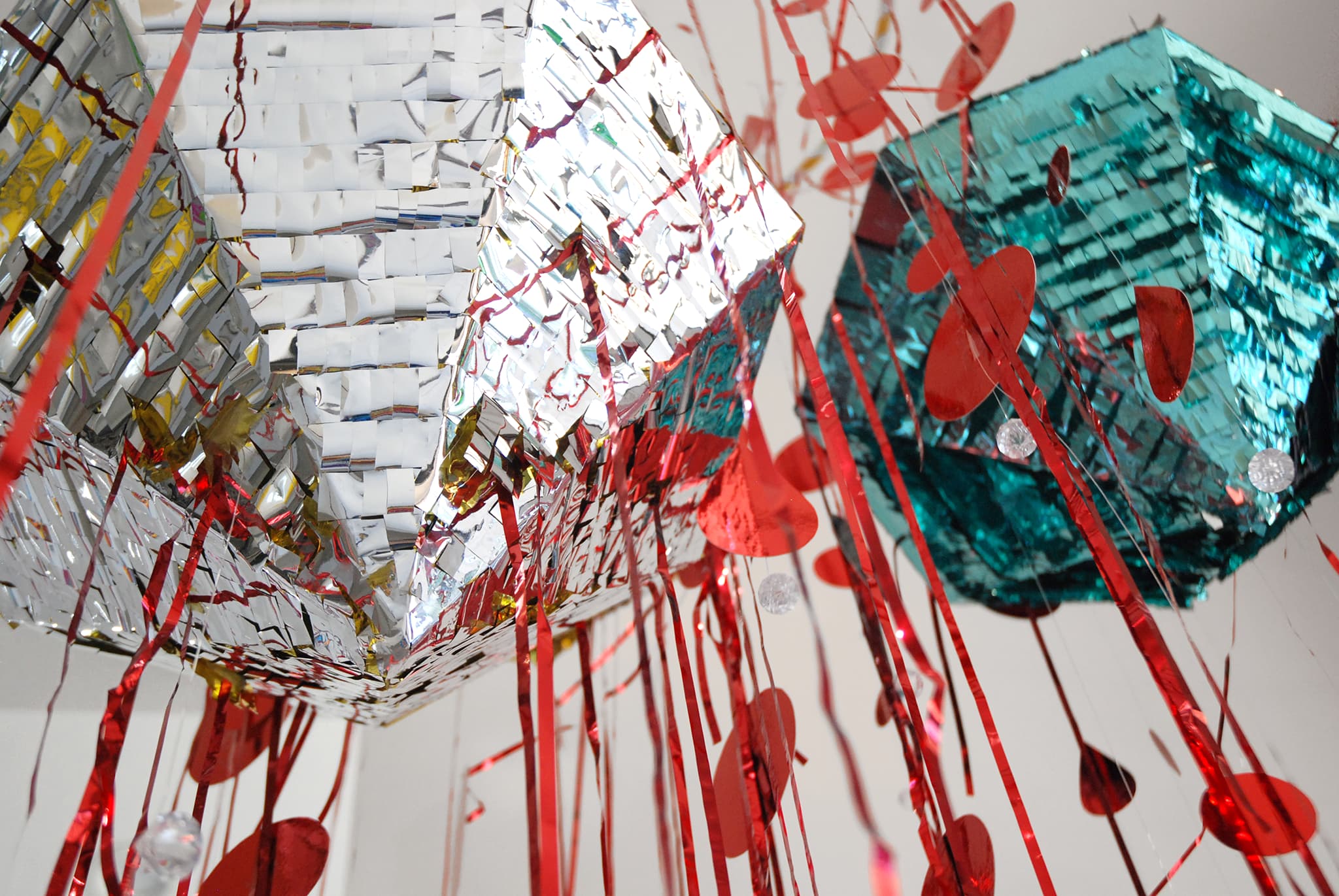
Piñatas as Commentary
Giovanni Valderas
Dallas native mixed media artist Giovanni Valderas incorporates and deconstructs elements of the traditional piñata in order to transform the piñata’s original identity as one of gratuitous celebration, into one of cultural construct.
The Casita Triste series guerrilla site-specific project draws inspiration from the brightly painted homes found in predominantly Latinx communities, which are quickly disappearing due to displacement and gentrification. Through the inclusion of cartoonish anthropomorphic elements, each piñata house speaks to the fragility, history, and experiences of the marginalized community.
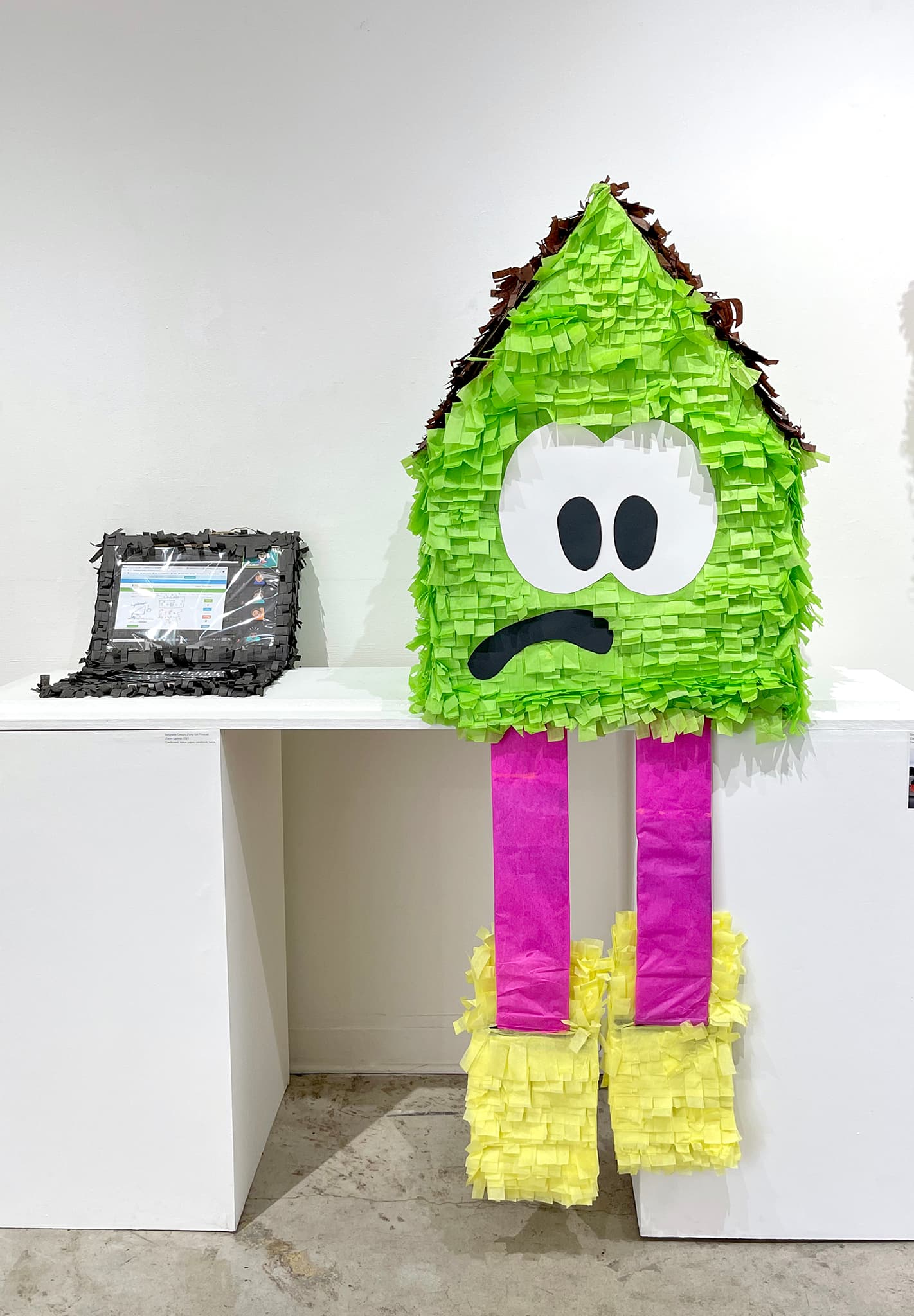
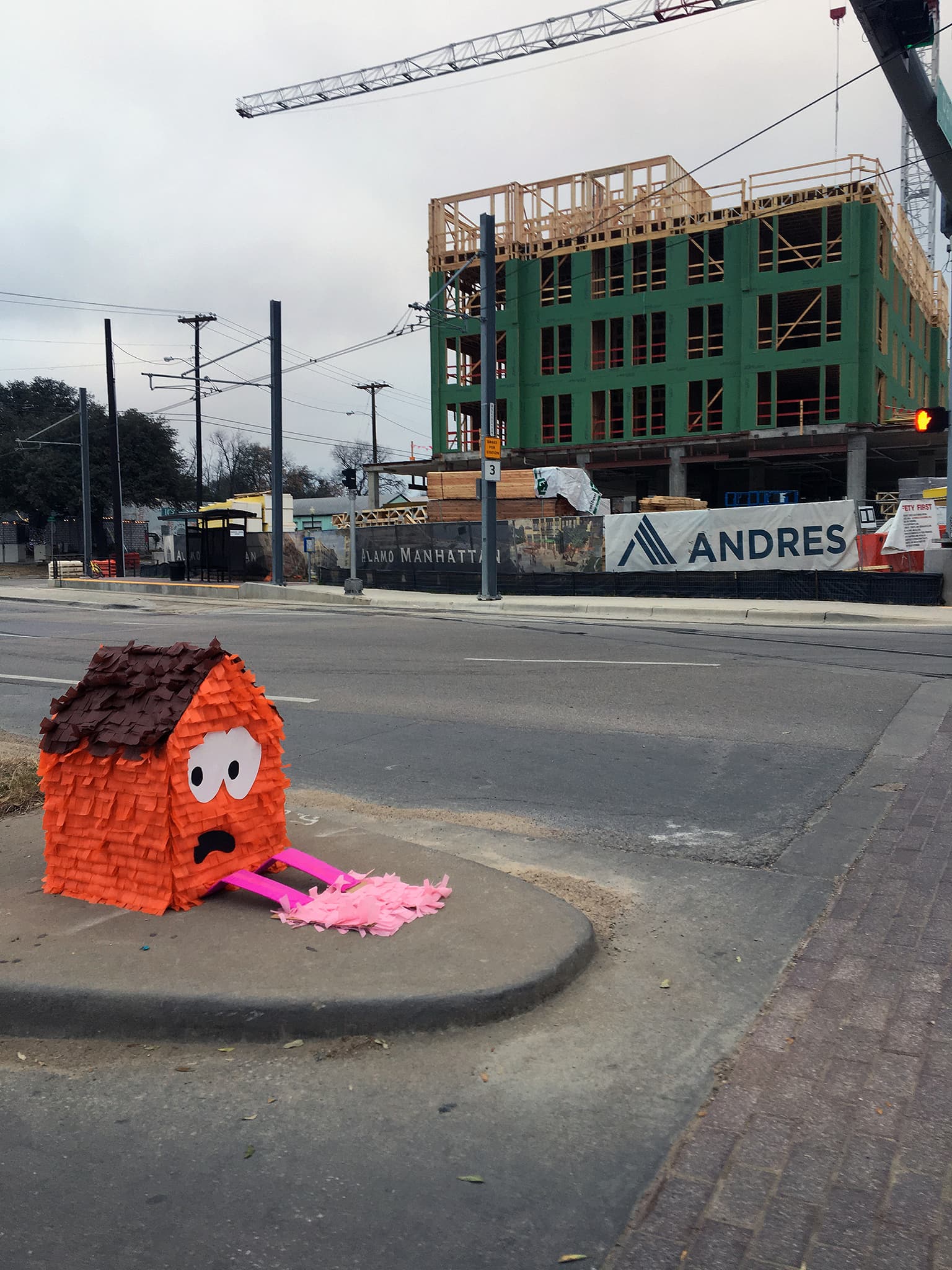
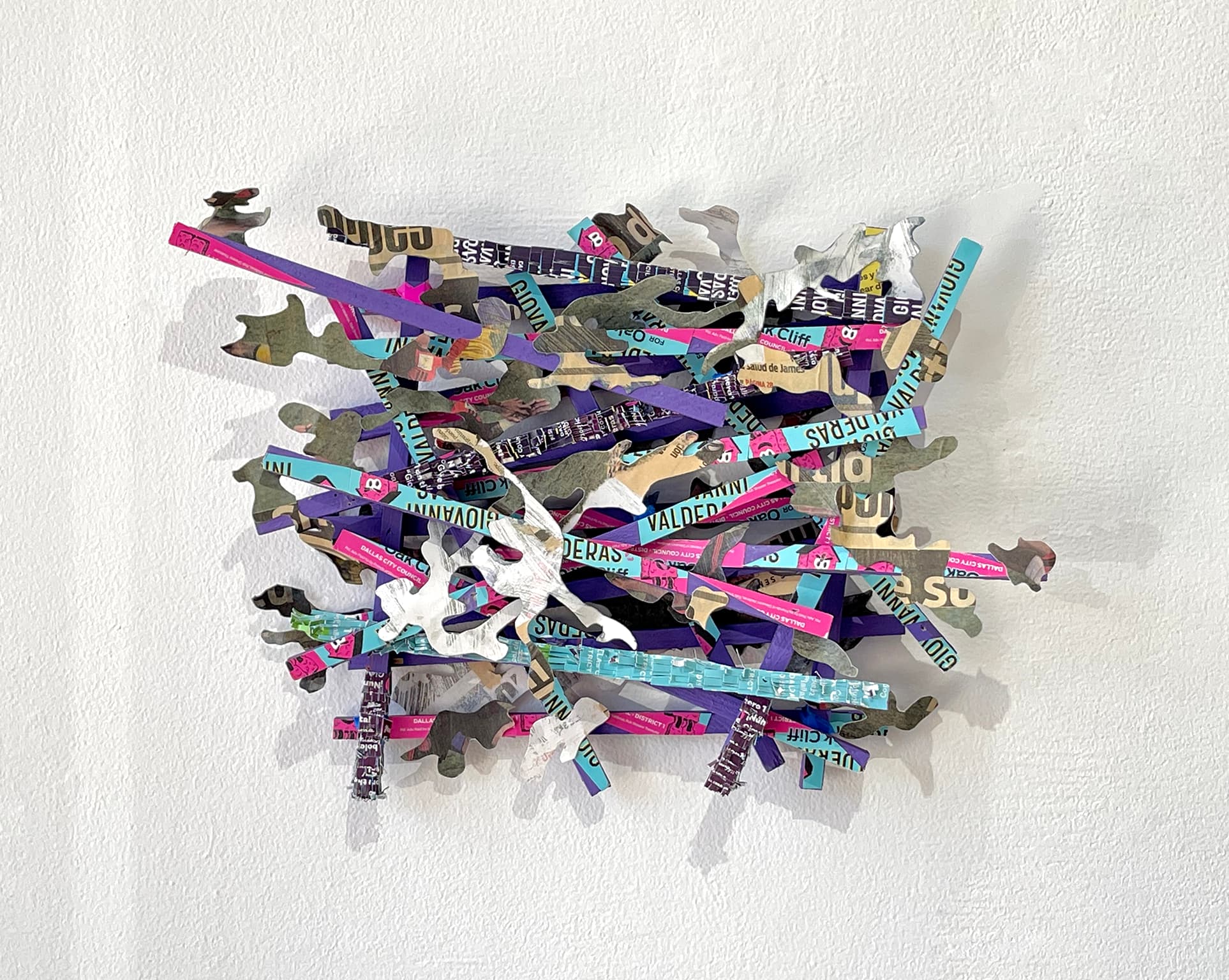
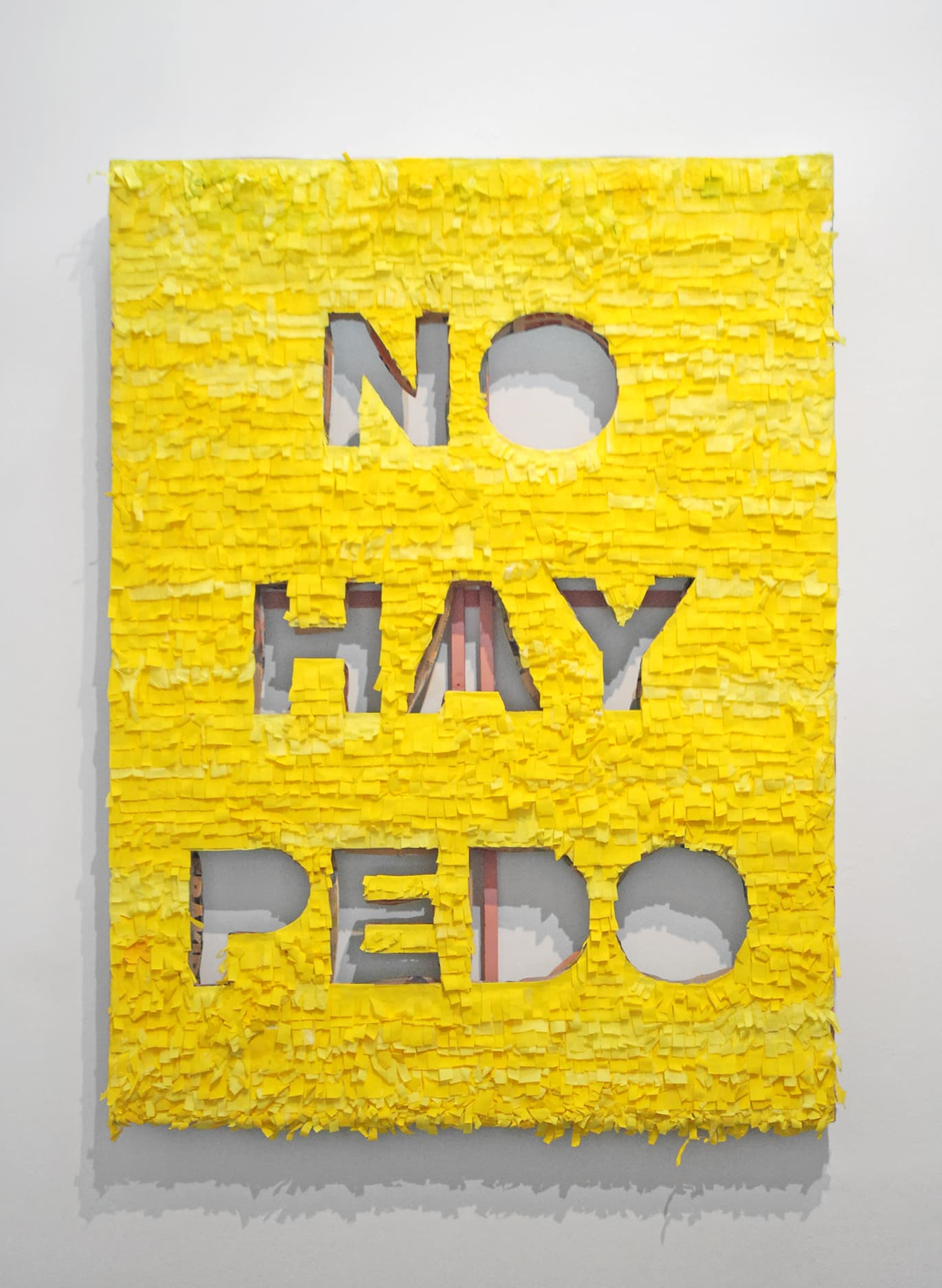
Piñata as Performance
Josue Ramirez
Josué Ramírez AKA Rawmirez is a multidisciplinary artist working in installation, craft, video, and performance. Rawmirez works in the Rio Grande Valley, along the Texas/Mexico border, and his current work investigates relationships between personal identity and location.
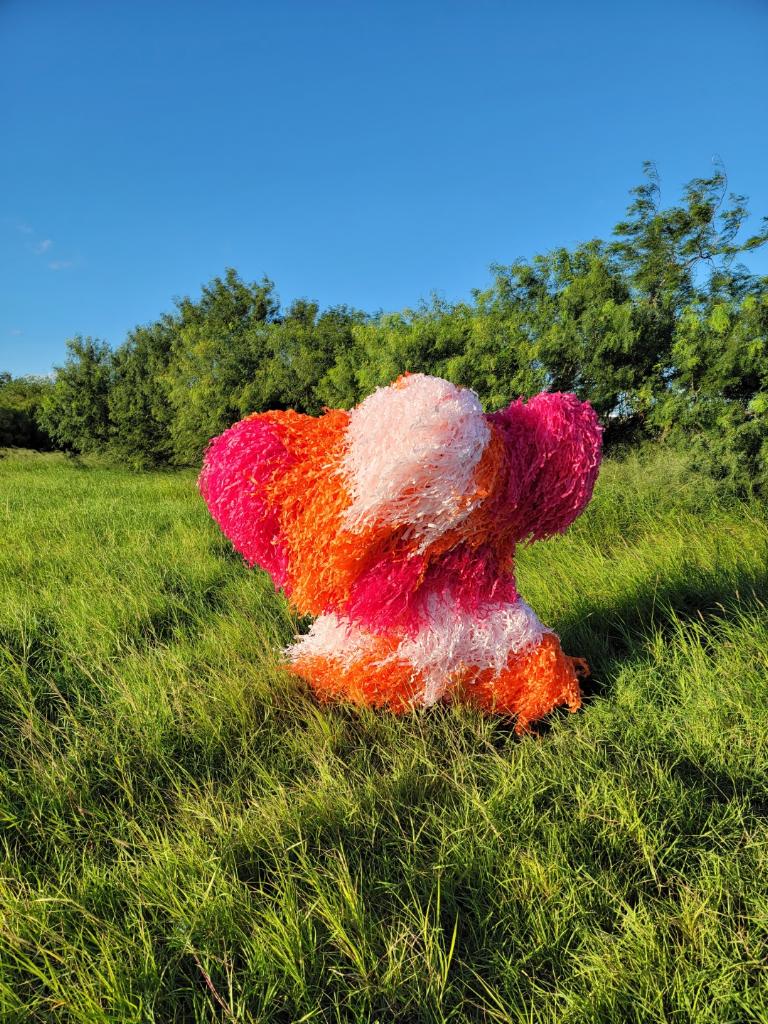
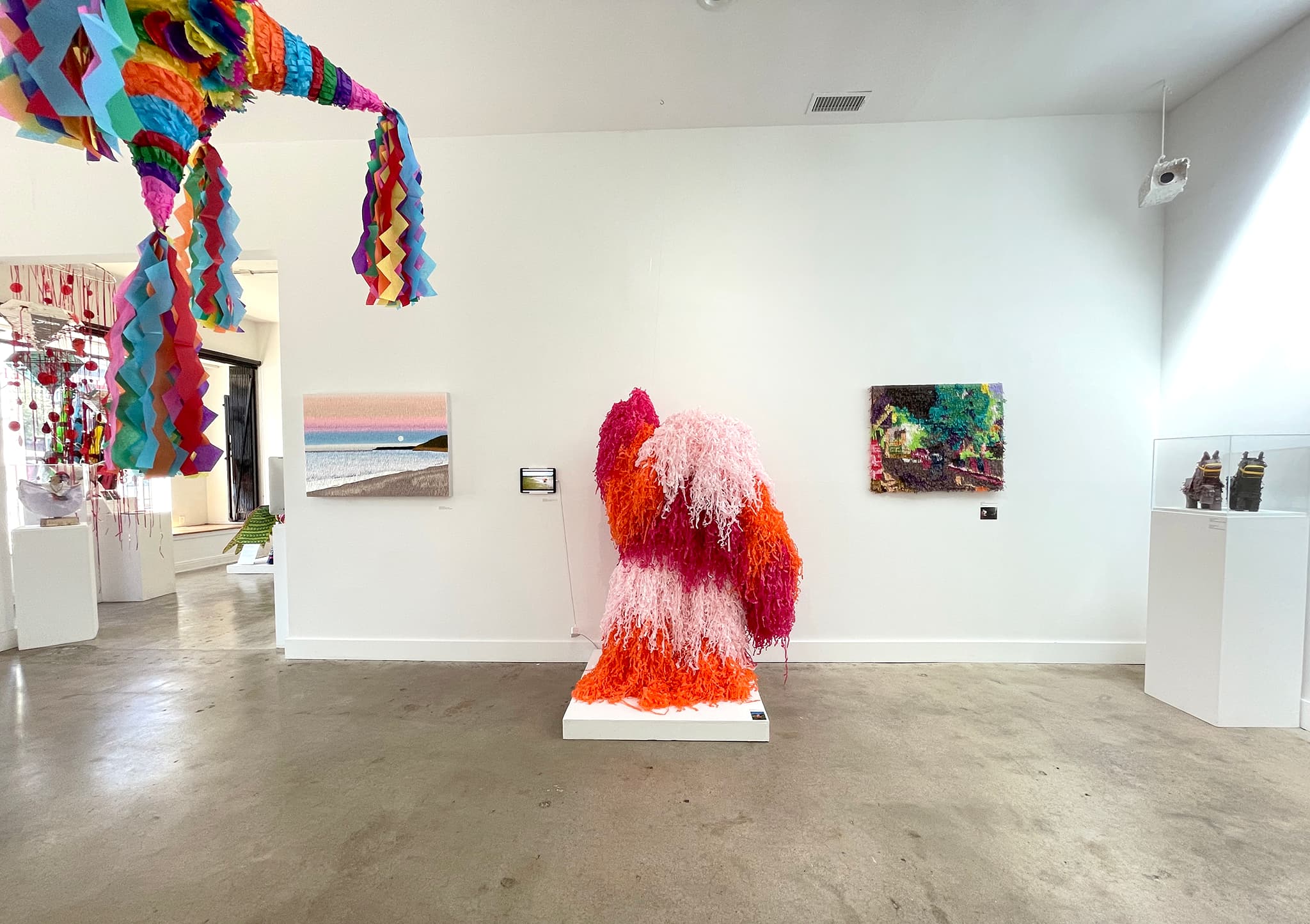
Piñatas and Cultural Tradition
Amazing Piñatas / Lorena Robletto
Amazing Piñatas was formed by owner Lorena Robletto nearly a decade ago. After consulting for immigrant-owned businesses and serving as a social worker for immigrant families, Robletto turned her focus towards the artistry of piñatas and set up a shop in the Los Angeles Piñata District. Her studio and storefront is now located in Mid City, where her team creates custom piñatas of any scale along with ready-made piñatas and various signature designs. She frequently makes props and commissions for the entertainment industry and other branded events.
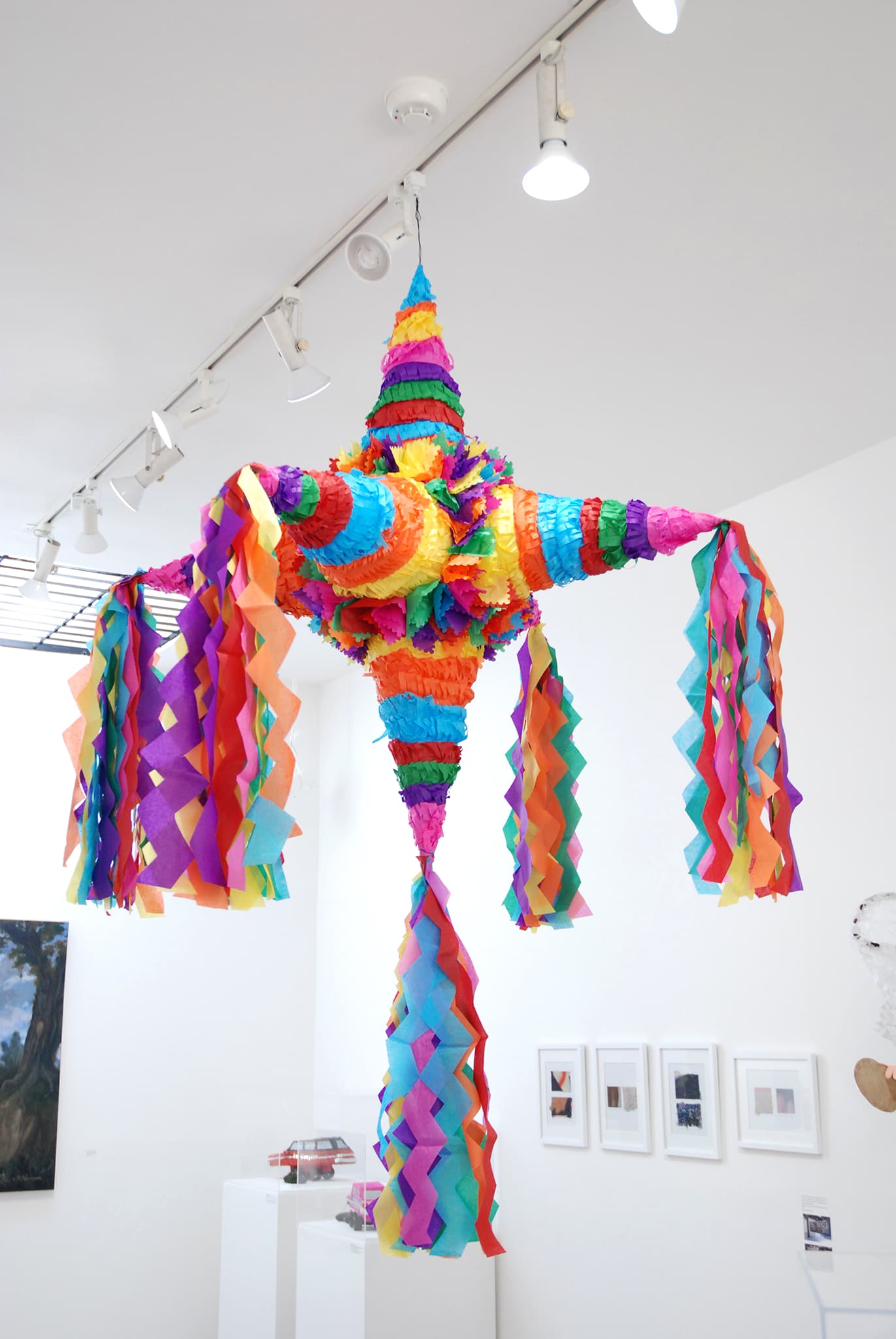
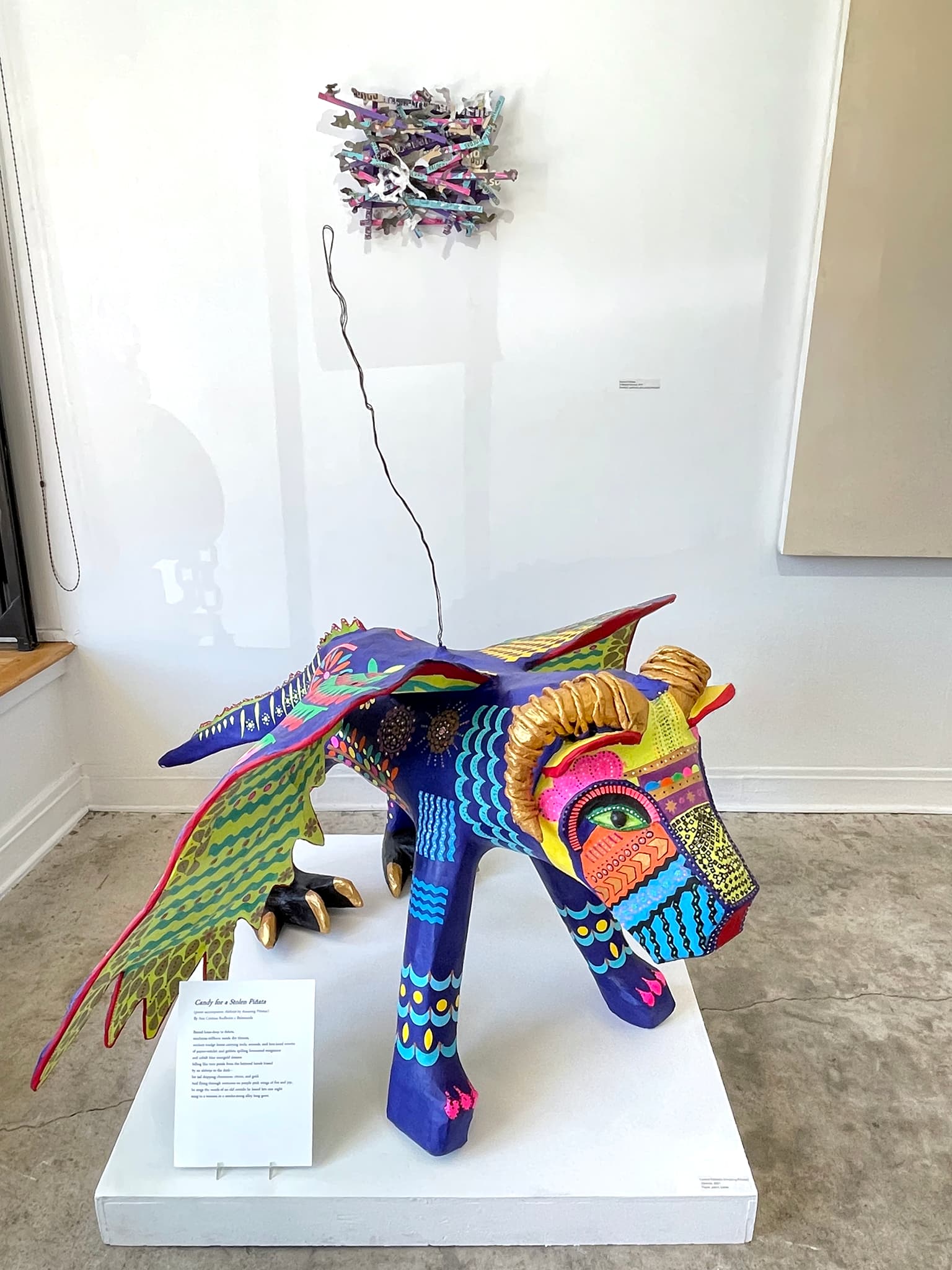
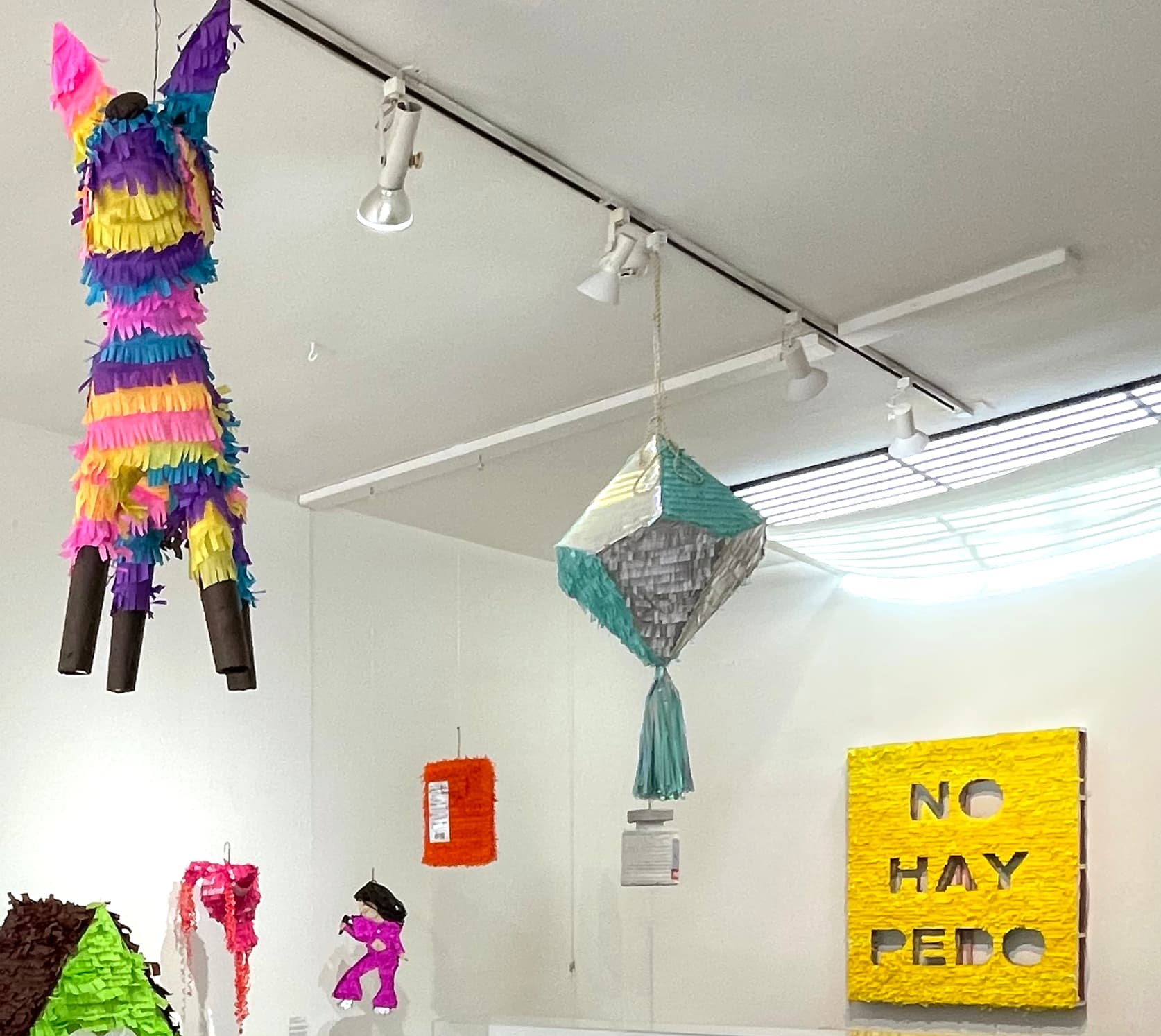
Dignicraft
The Collaborative Piñata is a long-term project to establish a dialogue between Purepecha crafts people and cultural agents from the region of Baja California, Mexico and Southern California, U.S.A. The border city of Rosarito, Baja California, is home to a community of up to 250 families who migrated north more than 1,500 miles from their ancestral homeland located in the island of Janitzio, Michoacan, and adopted the making of piñatas as their craft and main source of living.
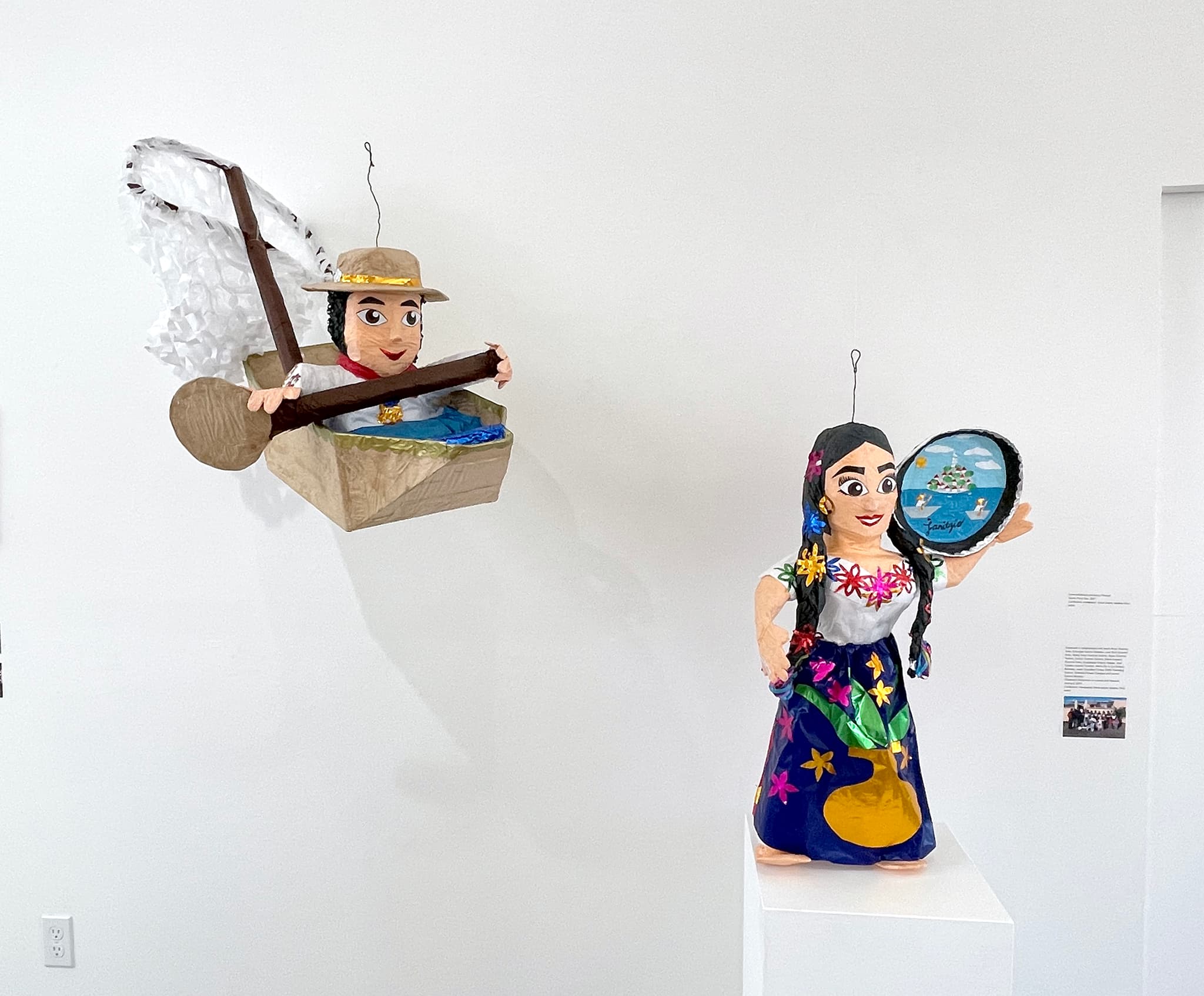
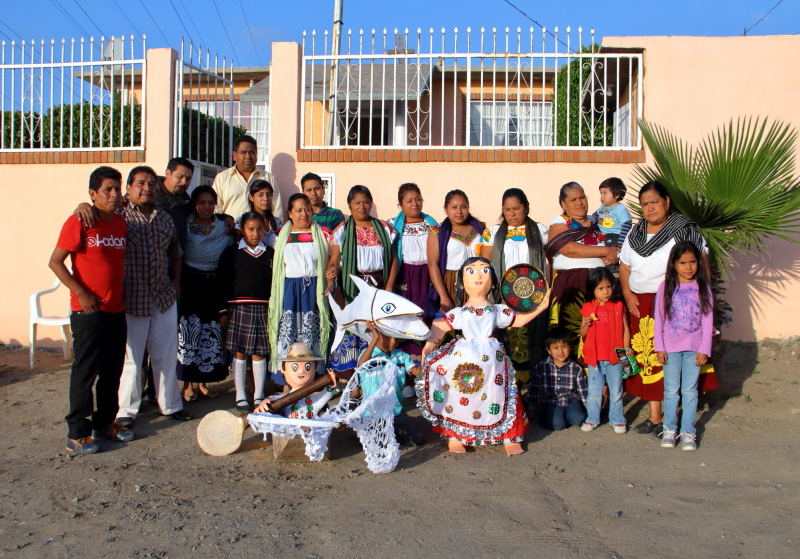
Piñatas for This Day and Age
Amorette Crespo
Amorette Crespo began making piñatas in 2017, when her daughter requested a Selena themed piñata for her 10th birthday. Crespo taught herself through practice, trial and error, and has been making custom piñatas ever since. From concept, to design, to prototype, to shopping for supplies to the finished product, Crespo is a one-woman operation. Crespo makes all of the piñatas in her home in El Sereno, in Los Angeles, CA, but she has customers all over the country.
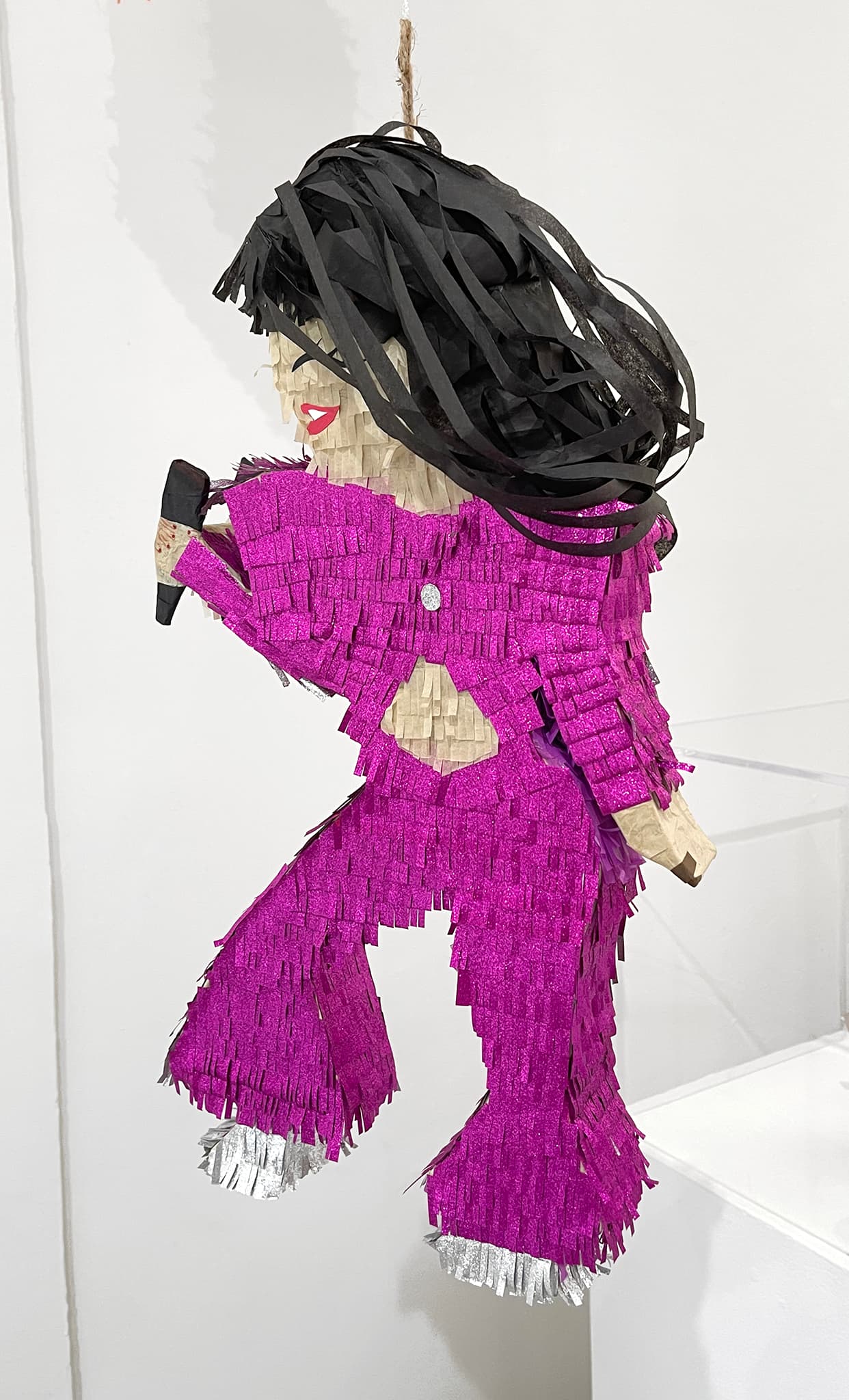
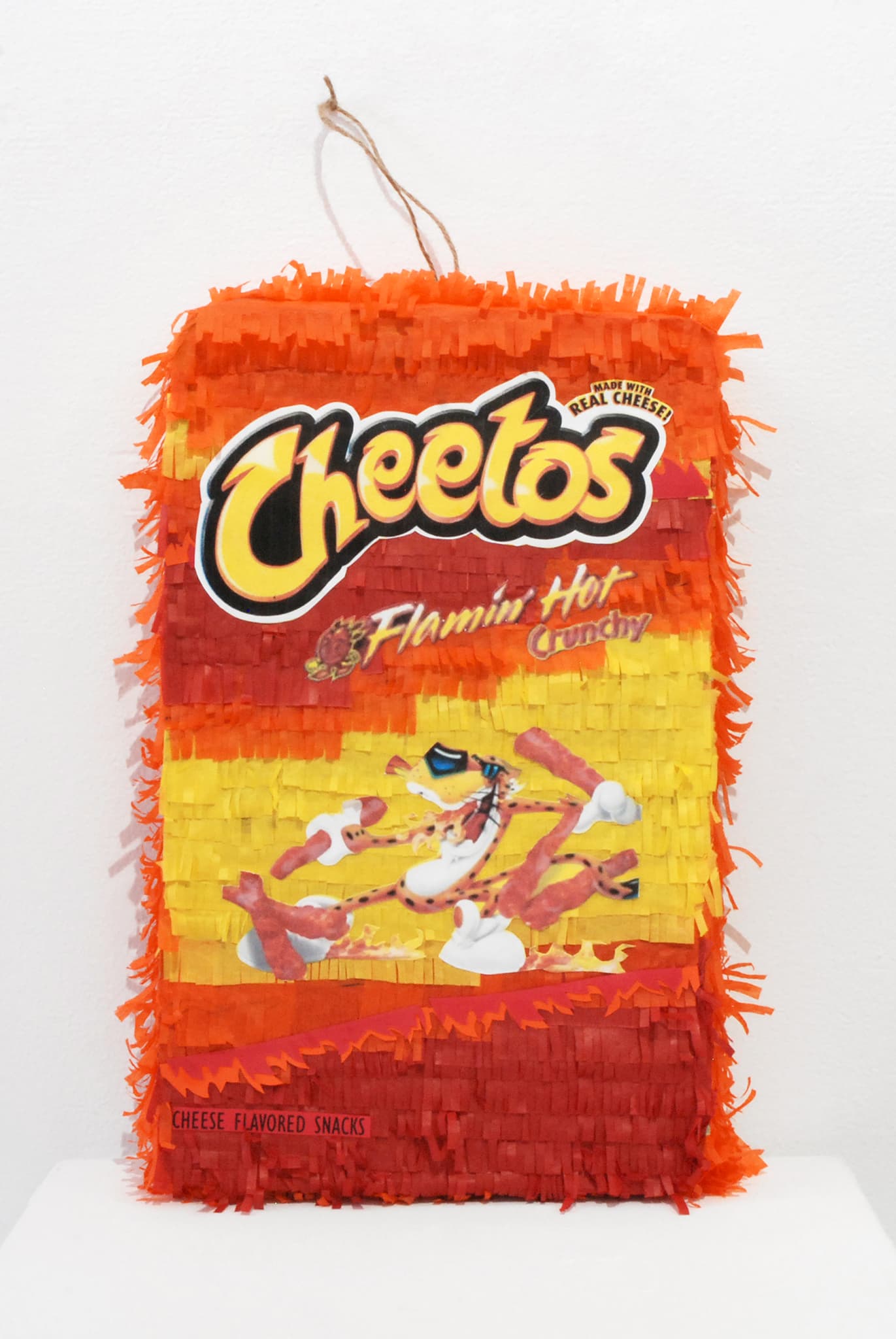
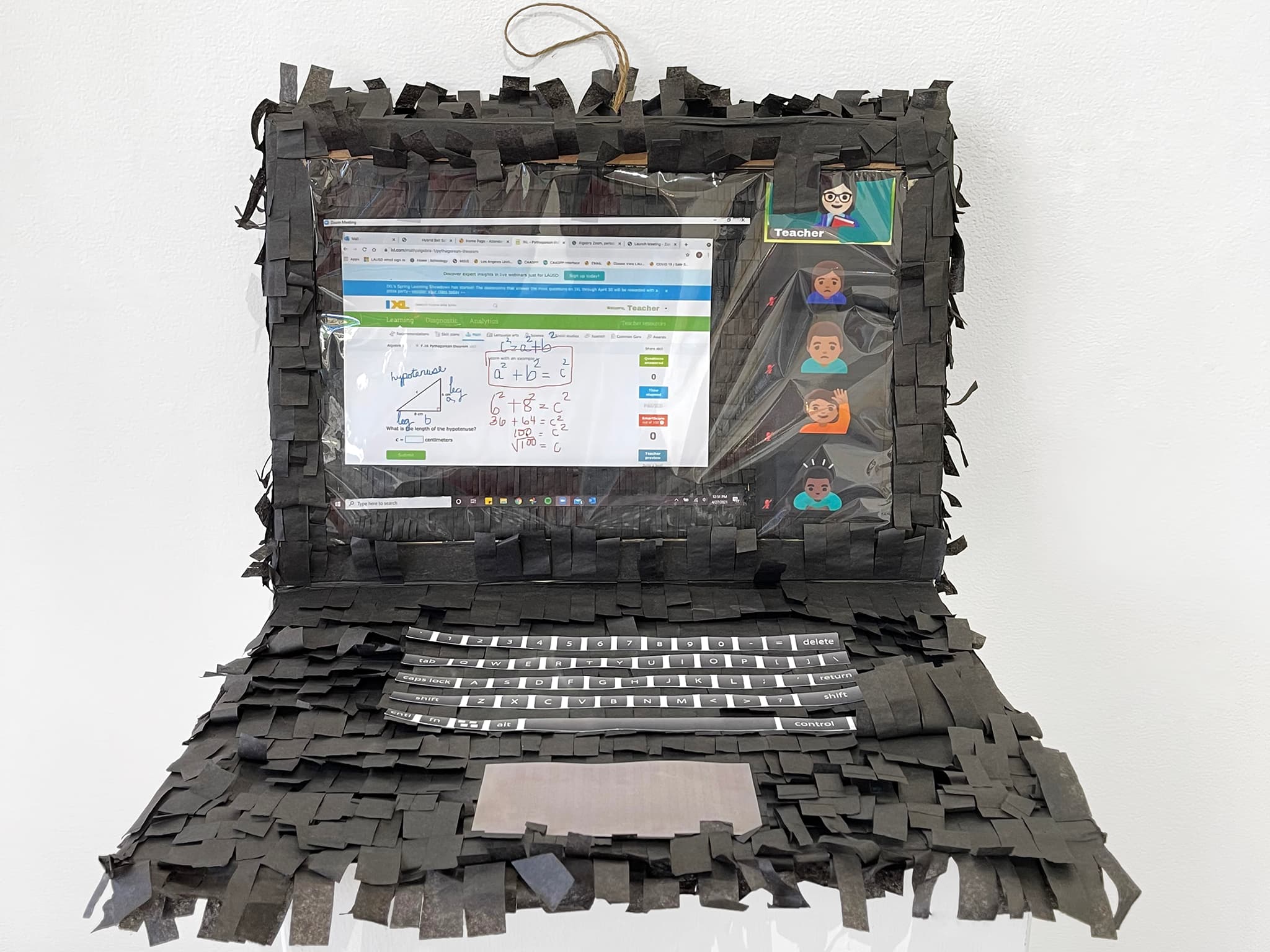
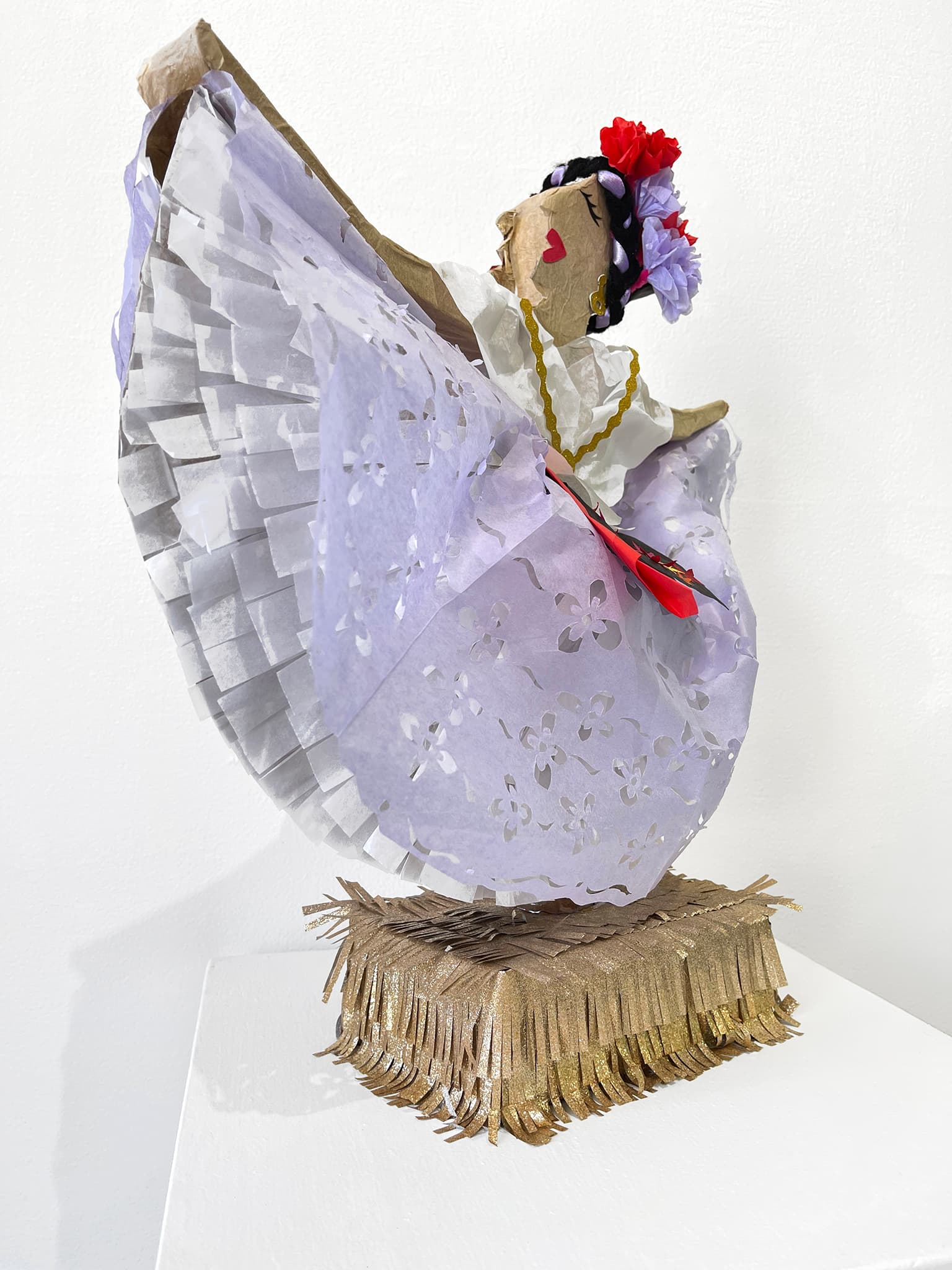
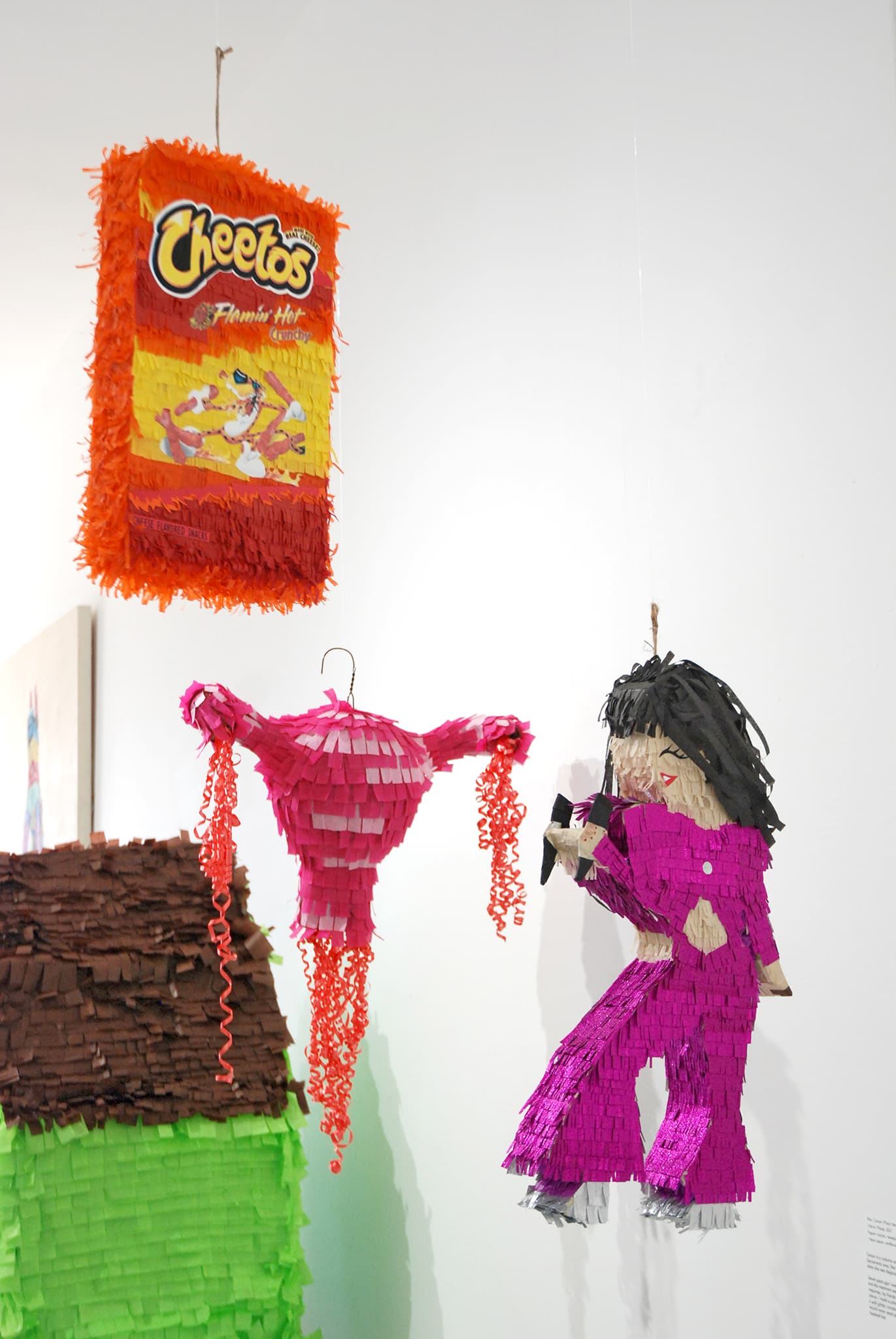
Mari Carson
Carson is a costume and sound designer based in the Sacramento area. She began making piñatas in 2014:
Seven years ago I was diagnosed with cervical cancer and the treatment was a radical hysterectomy. As a response, my friends threw a farewell party for my uterus. I made a piñata in the shape of a uterus, filled it with glitter, condoms, lube and the tampons I would never need again and destroyed it with a baseball bat.
Since then, I wanted to share this awesome piñata with the world. This piñata is made to order to celebrate your uterus or the uterus of someone you love.
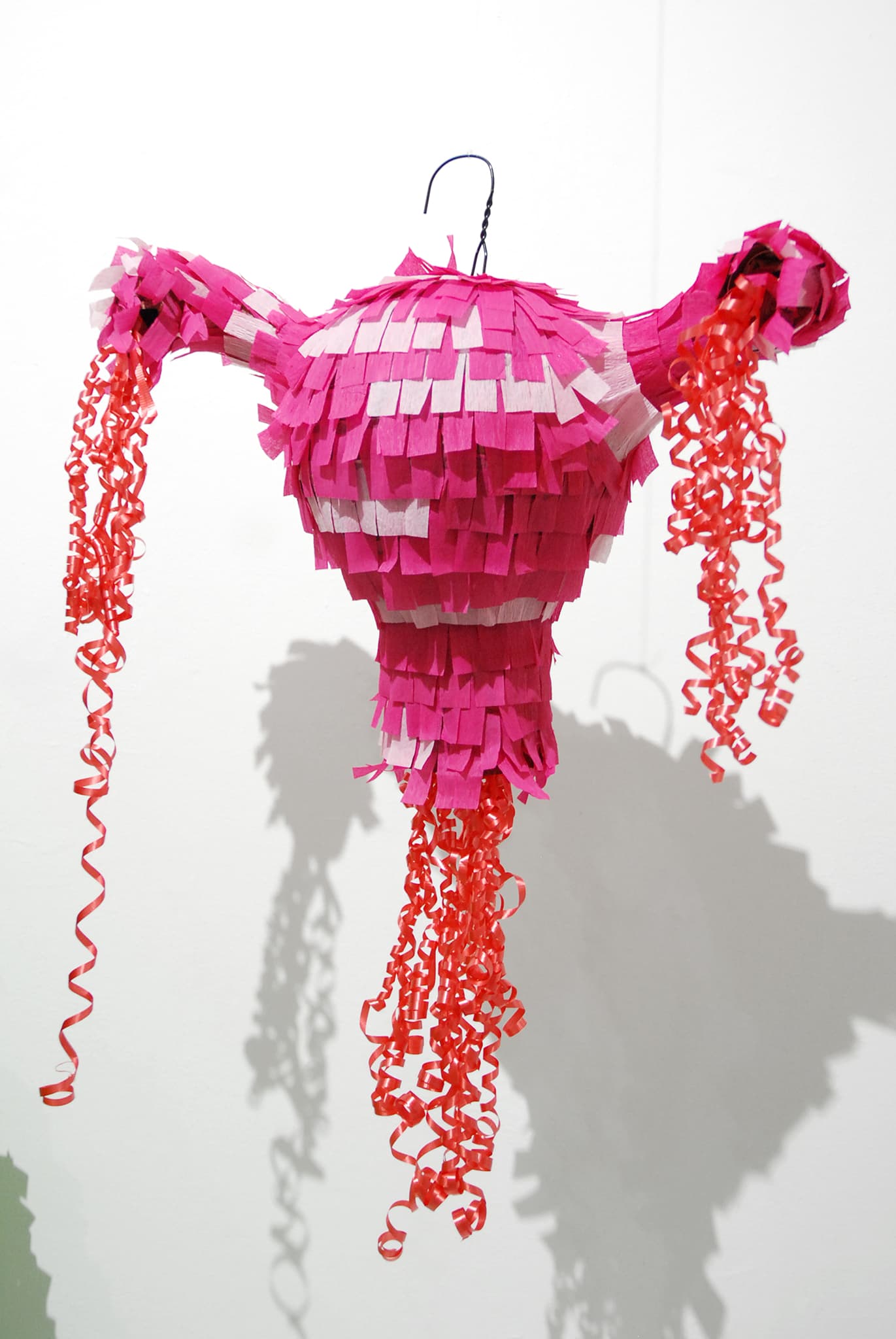
Lisbeth Palacios
Palacios’s All Party Art is a party supply business that specializes in piñatas. Palacios began her business in Venezuela and is now based in Tampa, Florida.
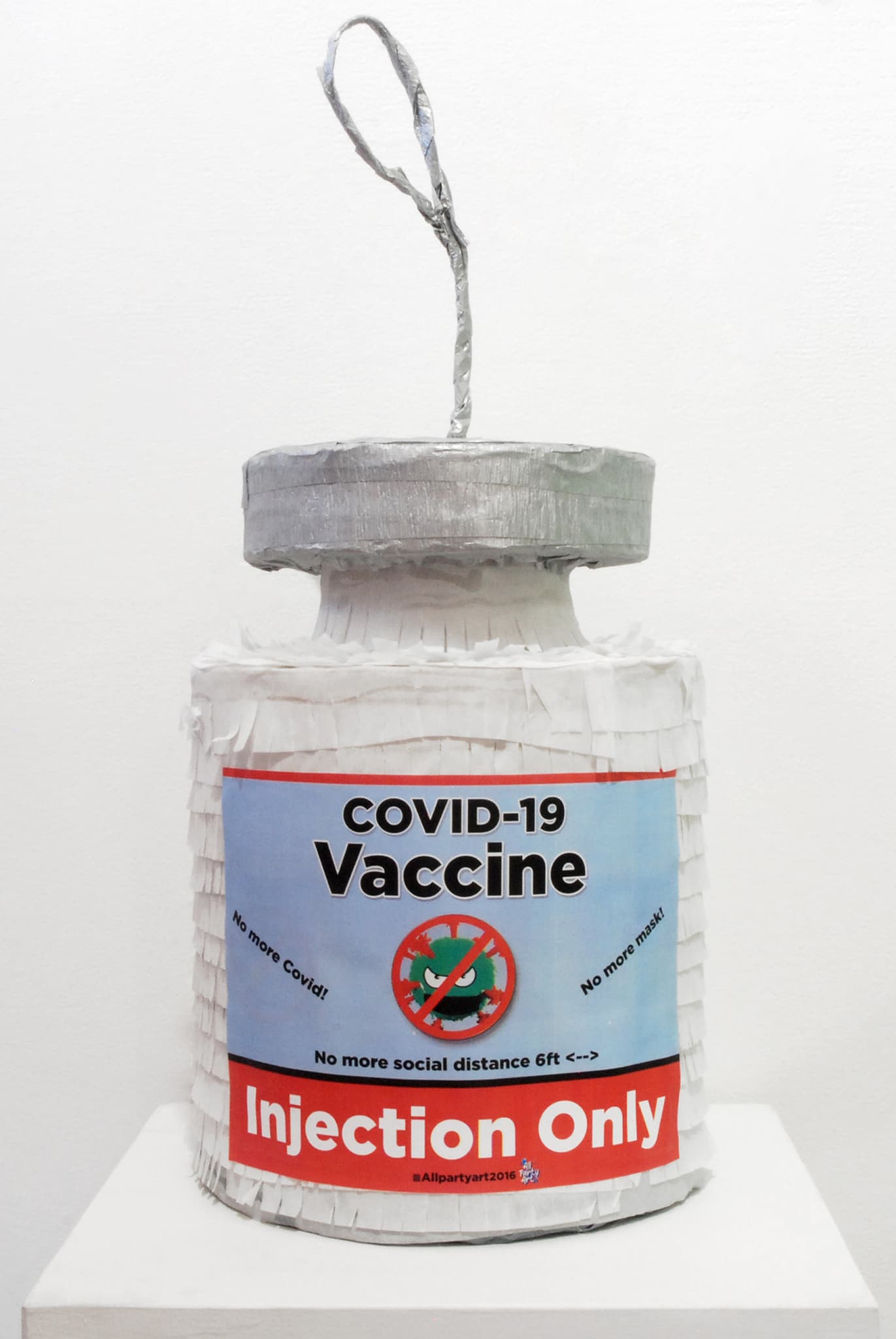
This project is supported by a grant from the City of Los Angeles Department of Cultural Affairs.
www.culturela.org

Additional support for the Craft in America Center is provided by the Los Angeles County Board of Supervisors through the Los Angeles County Department of Arts and Culture. www.lacountyarts.org
